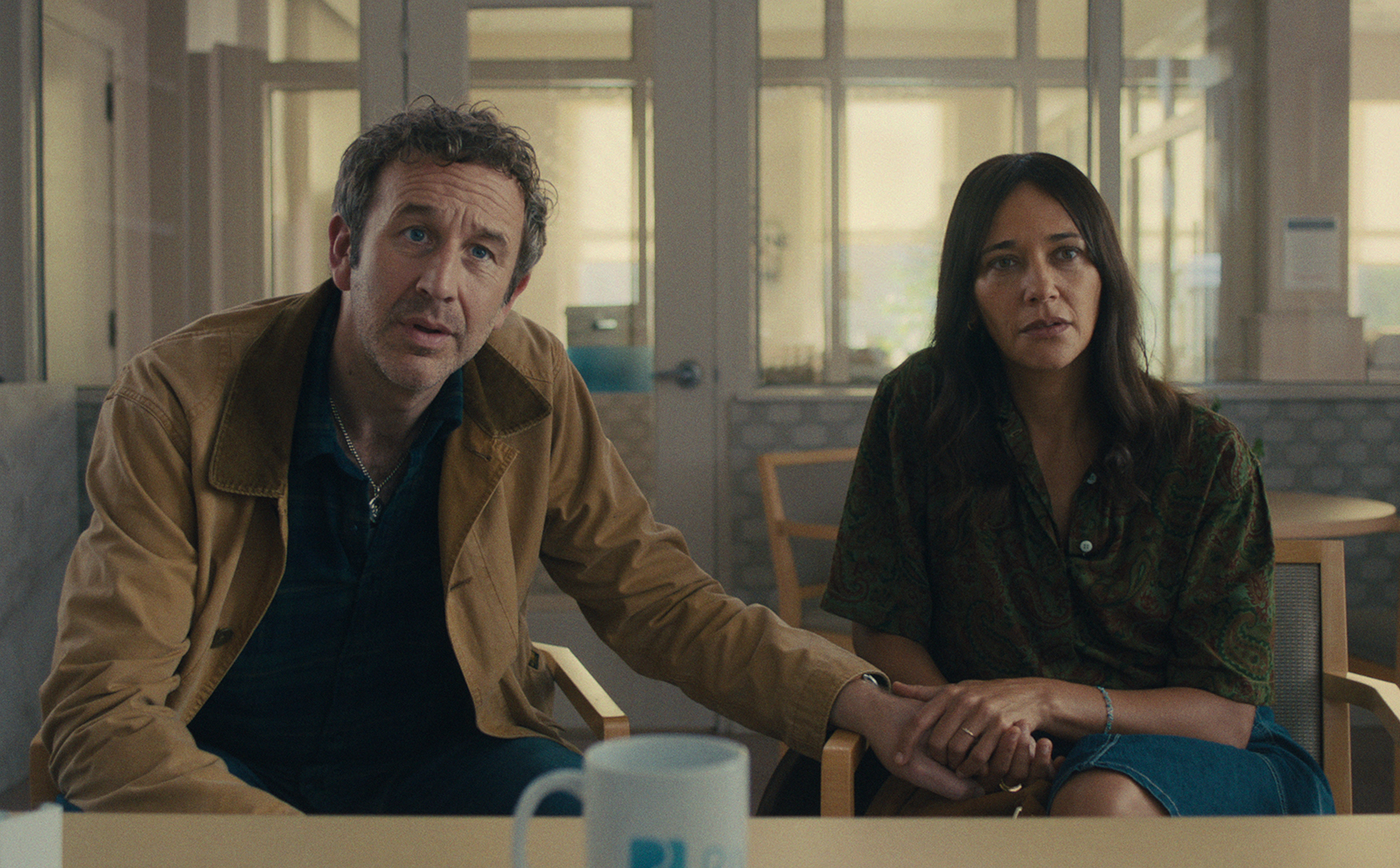Every Warhammer Fantasy game, ranked
Chaos never sleeps and neither do I, apparently.
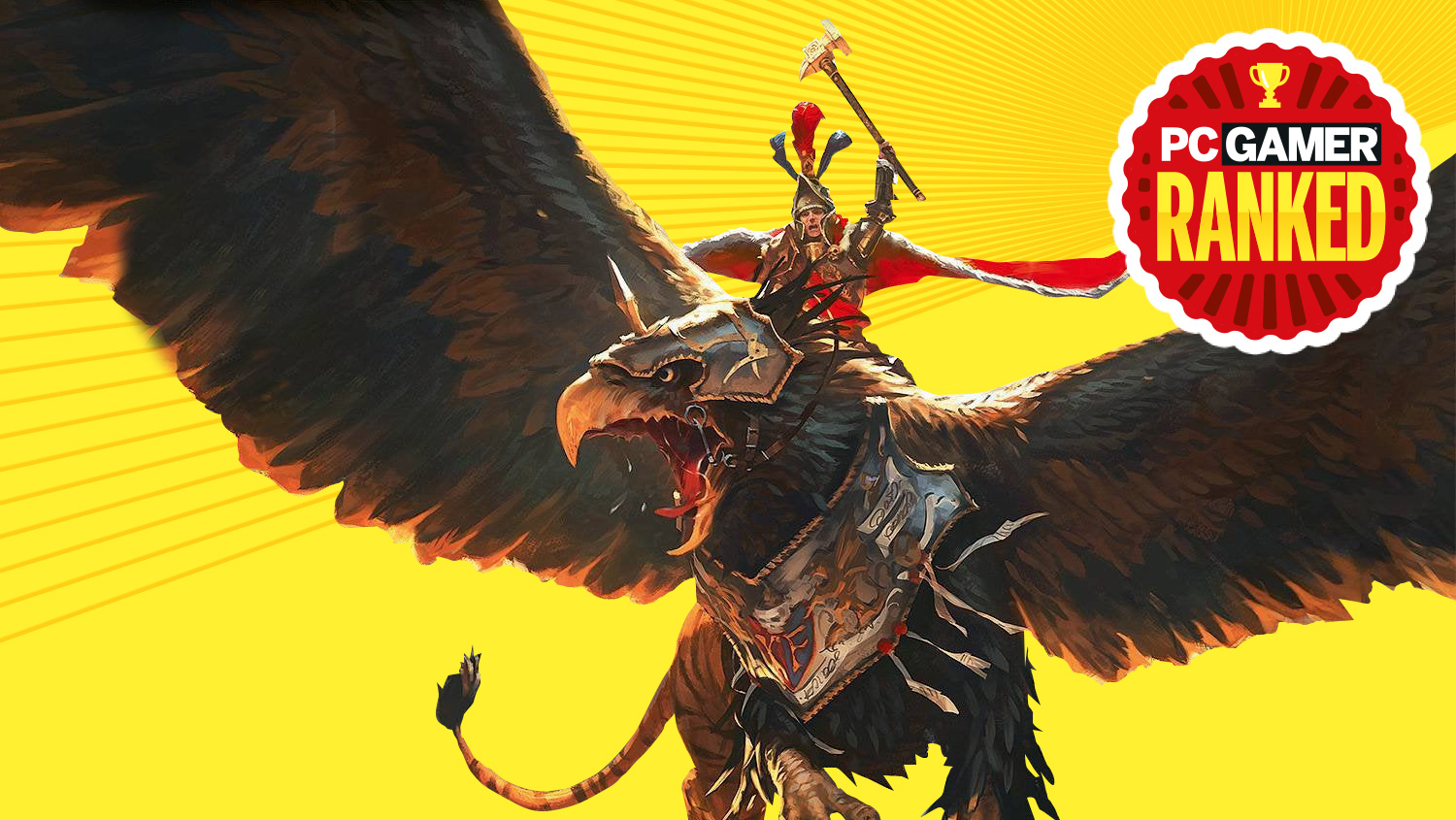
PC Gamer Ranked are our ridiculously comprehensive lists of the best, worst, and everything in-between from every corner of PC gaming.
For a brief period between 1983 and 1985, Games Workshop published their own videogames, including Chaos: The Battle of Wizards (created by a young developer called Julian Gollop who'd later make a name for himself with X-COM). But none of the videogames GW published was set in its own Warhammer Fantasy universe.
At the time the setting was a barely formed thing. 1984's second edition of Warhammer Fantasy Battle focused on a conflict between alien frogs and Amazons with laserguns on the continent of Lustria. Only after GW got out of the videogame racket would the Old World refocus on the gritty fantasy version of Renaissance Europe that became Warhammer's center stage.
In 1991 Gremlin Interactive adapted the board game HeroQuest, and Warhammer finally came to computers. Though it was a version of Warhammer targeted at ages nine and up, it still included distinctive elements like the fimir and the threat of Chaos. There weren't many Warhammer games over the subsequent 20 years, just a couple of fondly remembered strategy games and a tragically doomed MMO, and it wasn't until the 2010s that the Old World was explored more fully. Much more fully.
In 2015 alone there were four Warhammer Fantasy games released on PC and four more Warhammer 40,000 games. We went from a drought to a flood, from nothing to more than any one person could keep up with... unless they dedicated months of their life to playing every single Warhammer videogame.
Well, I've done just that. I've played them all. This list will help you navigate the flood.
Recent updates
While Warhammer 40,000 fans have been celebrating the smash success of Space Marine 2 this year, 2024 has been a quiet year for Warhammer Fantasy games, with nothing new to add to our list. Existing games have been enjoying support, though: Vermintide 2 got its free Versus mode this year, Blood Bowl 3 has introduced new teams including the much loved Halflings and Goblins, and Total War: Warhammer 3 has added new legendary lords alongside reworks for several factions. Things have been busy on the tabletop, too, with The Old World (Games Workshop's revival of Warhammer Fantasy) enjoying growing popularity and new releases alongside the continued success of Age of Sigmar.
The Criteria
Number of entries: 30. New and altered entries in the latest update are marked 💀.
The biggest gaming news, reviews and hardware deals
Keep up to date with the most important stories and the best deals, as picked by the PC Gamer team.
What's included: Every Warhammer game on PC set in the Old World, the parody-football universe of Blood Bowl, and the Warhammer sequel setting Age of Sigmar.
What's not included: Games Workshop games in other fantasy settings—like HeroQuest 2: Legacy of Sorasil, which ditched the Old World for a new setting called the Lands of Rhia, and the Talisman games which have developed their own "world of Talisman." It's pretty complete, is what I'm saying.
Here's a separate list ranking every Warhammer 40,000 game. And now: Every Warhammer game, ranked from worst to best.
30. Chaos & Conquest (2019)
Hunted Cow Studios/Tilting Point
Steam

Remember Evony? "Play now, my Lord!" Remember the licenced cash-ins that filtered everything from Ultima to Game of Thrones through the exact same formula of settlement construction and army building, with free-to-play energy mechanics and multiple currencies designed to confuse players out of cash? Chaos & Conquest is that, but instead of a lady in tavern-wench cosplay exhorting you to build another granary it's a champion in spiky armor suggesting you upgrade your Chaos Keep. It sucks and I hate it.
29. Age of Sigmar: Soul Arena (2023)
Trophy Games
Steam
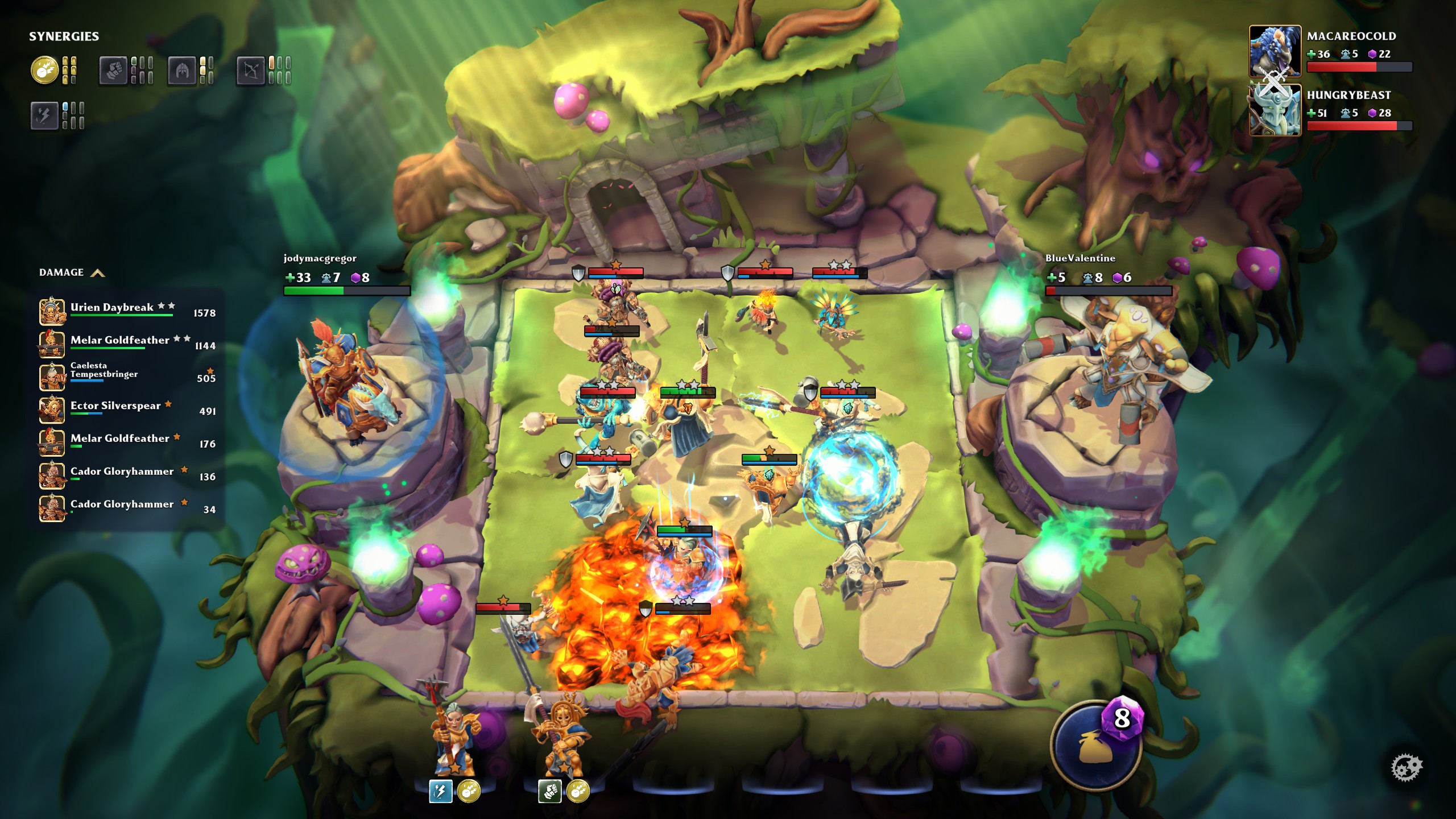
It's the generic autobattler format—frantically shopping for units while a timer ticks away the wasted seconds of your life, then sitting back to spectate those units as they blunder into each other and their health bars dwindle—given an Age of Sigmar skin. A cutesy one that's unusual for Warhammer, but everywhere in mobile games, which Soul Arena clearly is.
Though its Stormcast Eternals, daemonettes, and lizardmen are all big-headed toys, that doesn't actually make the various subtypes easier to tell apart in the zoomed-out battlefield view. When you're shopping for new units you can properly see how hideous they are, mocking you while you pay to refresh the store's selection only to be shown another three ugly weirdos you don't want.
The autobattler fad kicked off in 2019, and by 2023, when Soul Arena arrived in early access, seemed well and truly over—with good reason.
28. Blood Bowl (1995)
Destiny Software Productions/MicroLeague
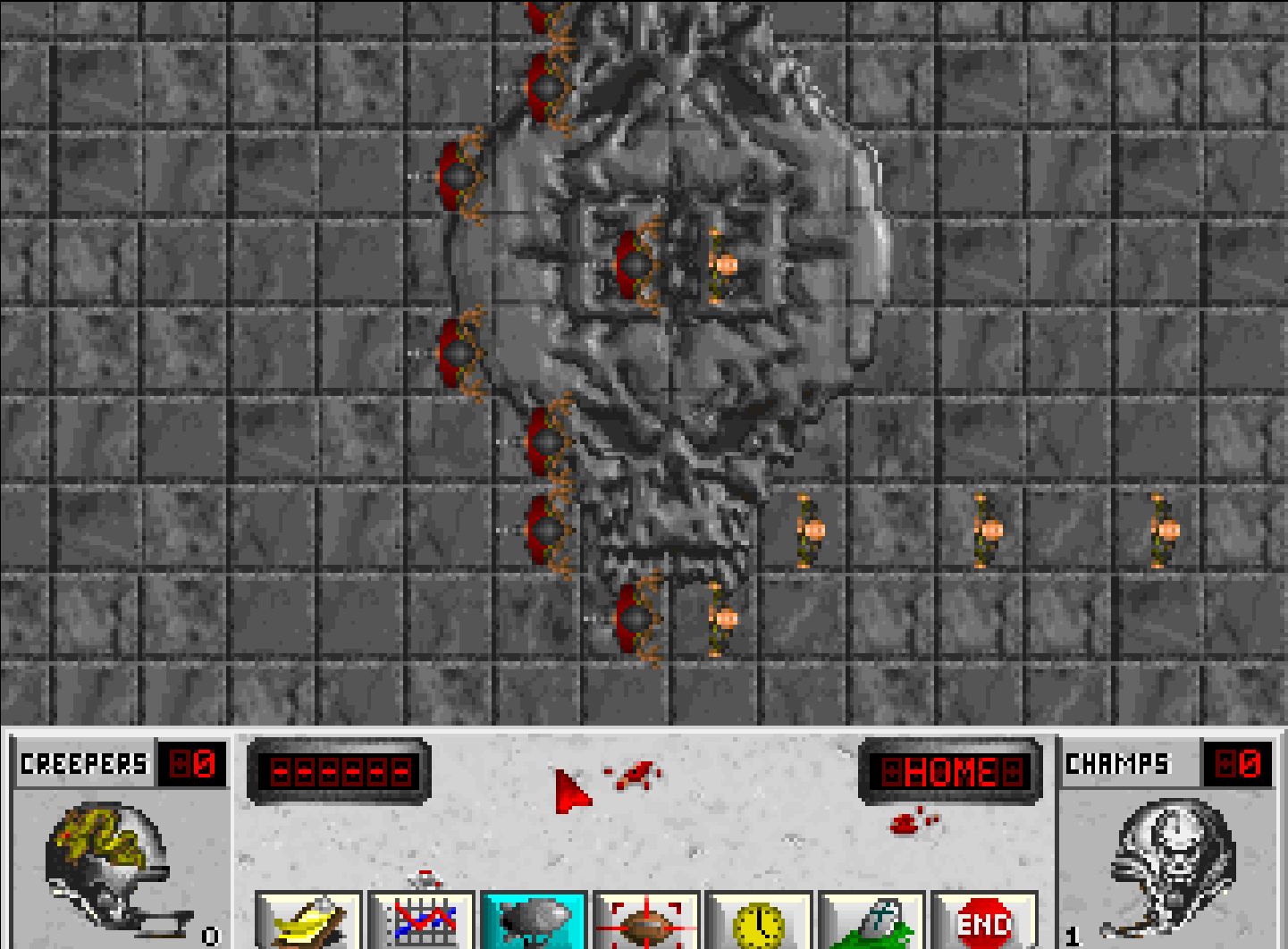
Games Workshop's fantasy football game has been adapted multiple times, beginning with this forgotten version published by MicroLeague in 1995. It's faithful to the board game but to call it barebones would be an insult to skeletons. There's only one player icon per team, so there's no way to tell a thrower from a catcher at a glance, let alone a puny skaven from a beefcake rat ogre, which is pretty important. You have to laboriously click through every player to be reminded which is which. People talk a lot of smack about the more recent Blood Bowl games by Cyanide, but that's because they don't know how bad we used to have it.
27. Dungeonbowl (2012)
Cyanide Studio/Nacon
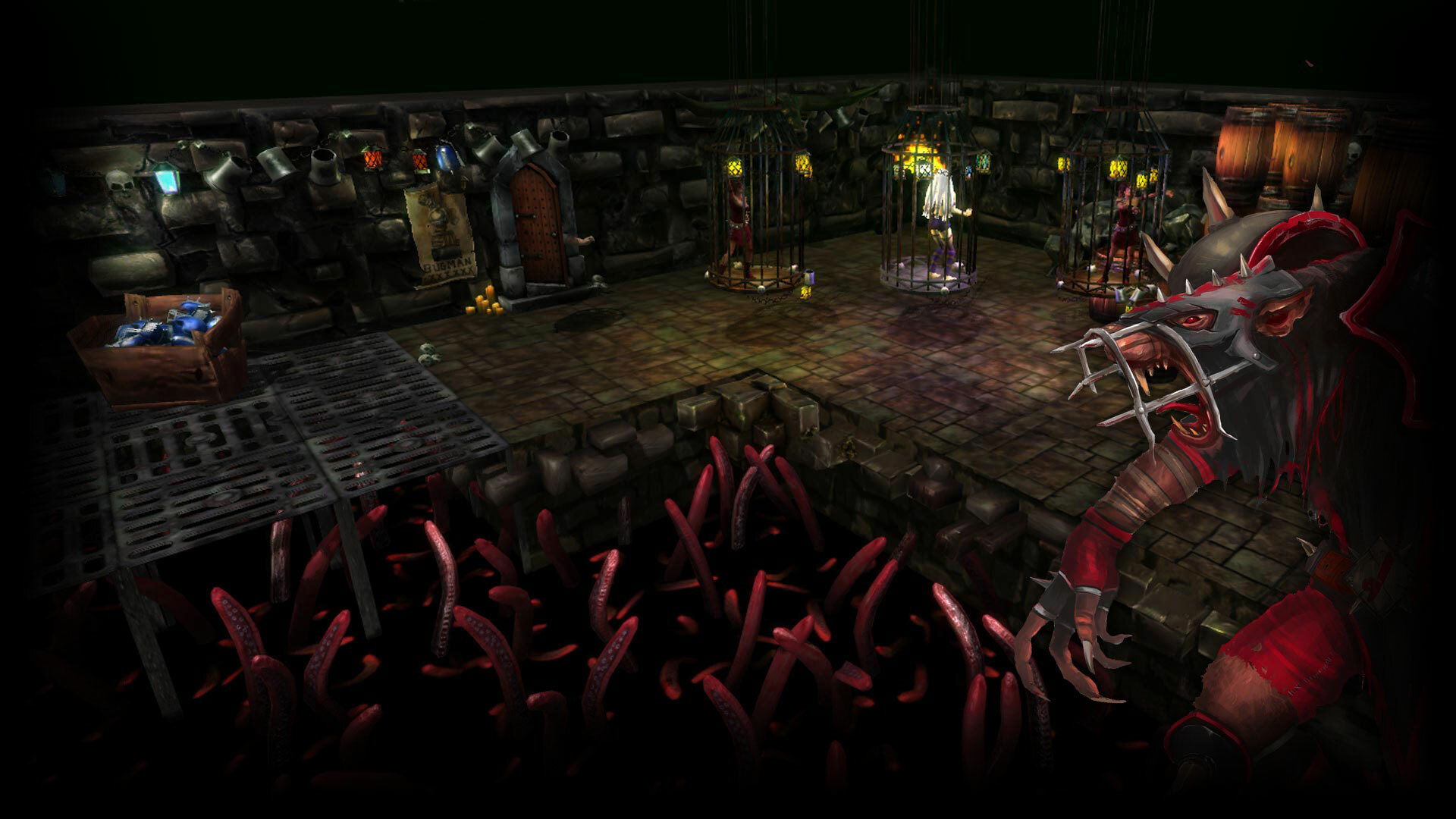
Although this is still pretty bad. The tabletop version of Dungeonbowl was an expansion for the miniatures game, moving it underground and adding a parody of dungeon-crawling RPGs to its parody of American football. The videogame is a standalone take on the same idea, where the ball's hidden in a random treasure chest in a dungeon full of teleporters that bounce players from room to room.
If you thought Blood Bowl was too dicey before, Dungeonbowl will be torture. Even if you like Blood Bowl, taking its rules for maneuvering around open fields and squeezing them into corridors doesn't actually work. At all.
26. Age of Sigmar: Tempestfall (2021)
Carbon Studio
Steam
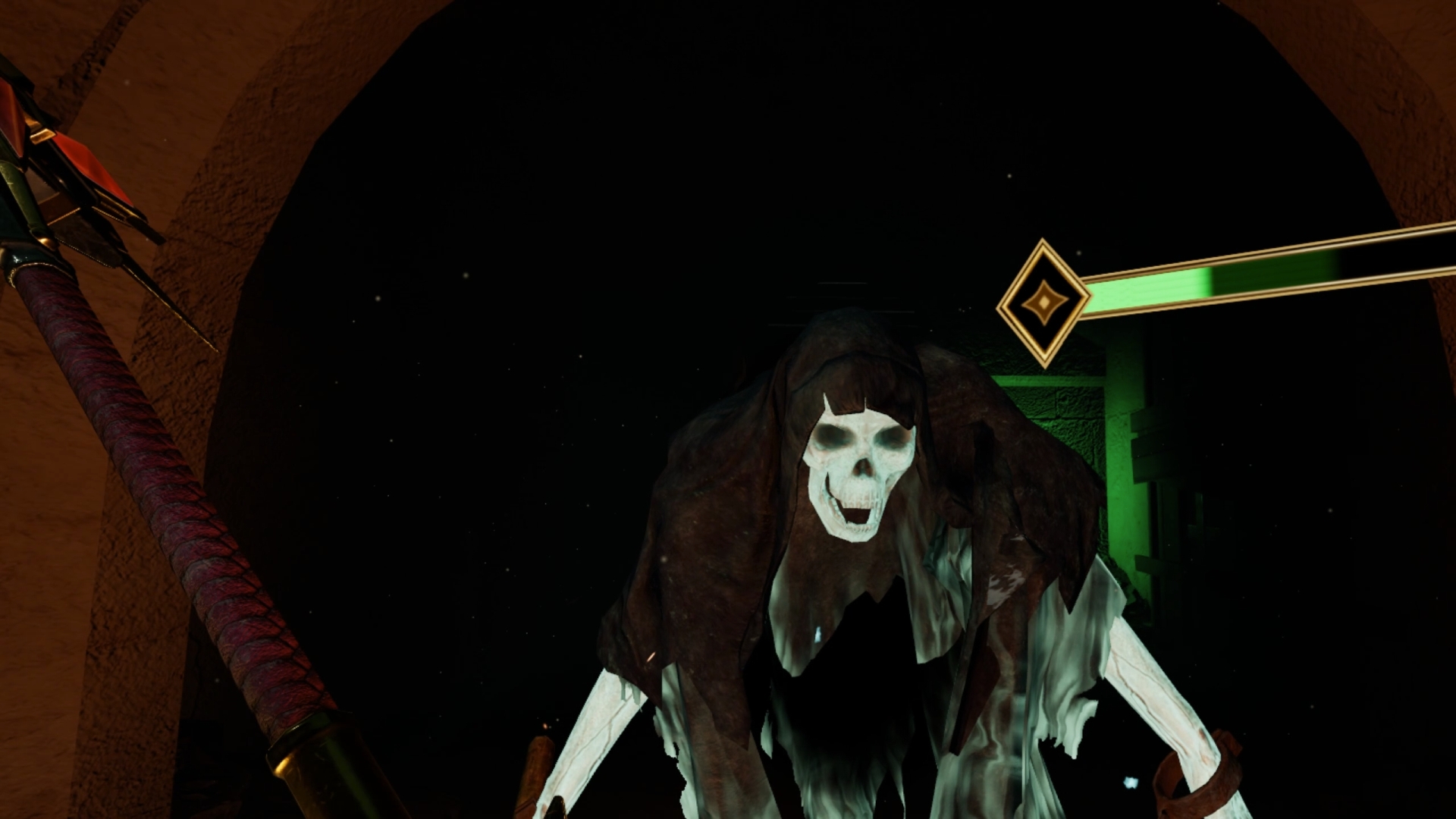
A VR action game where you're a lord-arcanum of the Stormcast Eternals, basically a lightning wizard in heavy armor. You summon weapons—sword, axe, and staff—by gripping your fists, cast spells by squeezing a trigger while waving, sweeping, and pointing them, and then go to town on the undead of the Nighthaunt.
Those weapons lack heft though, making combat feel like you're waving a Wiimote rather than a magic axe. It's a bit janky all over, with doors getting stuck halfway and the bits where you squeeze through a tight passage or climb down a rope occasionally glitching you off into space. Get past them and you'll find batches of samey skeletons and ghosts appearing in designated combat arenas, which are separated by designated exploration zones with glowing collectibles and NPCs stiffly waving their arms while droning exposition. Bugs and floaty controls may be fixable, but how boring Tempestfall is? Probably not.
25. Warhammer Quest: Silver Tower (2021)
Perchang
Steam | Microsoft Store
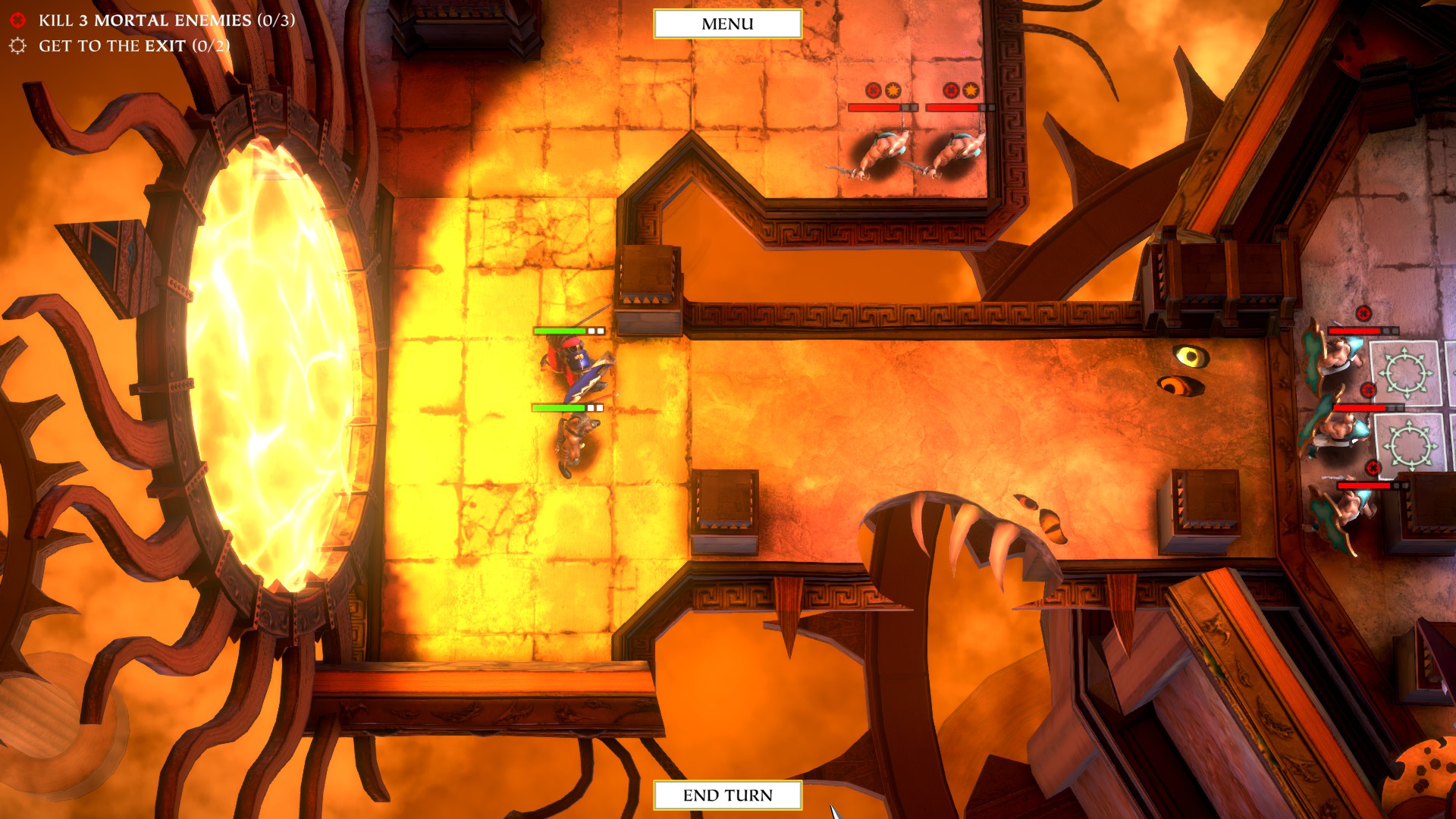
The Warhammer Quest games jump to the Age of Sigmar, but more worryingly become free-to-play. While the first in the series had exploration between battles and story between dungeons, here each time you finish fighting on a recycled map you get shunted back to the menu in the hope you'll spend money in the shop. What can you buy? Loot boxes and random heroes. It's a gacha game, yeah.
Most of the levels are easy, even after they eventually open up and stop being literal corridors, and the closest thing to a challenge is making sure you don't lose enough health to score less than three stars—sorry, scrolls—on the occasional harder one. Even rudimentary features of the previous games, like heroes having multiple interesting abilities to manage and a rotatable camera, have been binned.
24. Arcane Magic (2016)
Turbo Tape Games
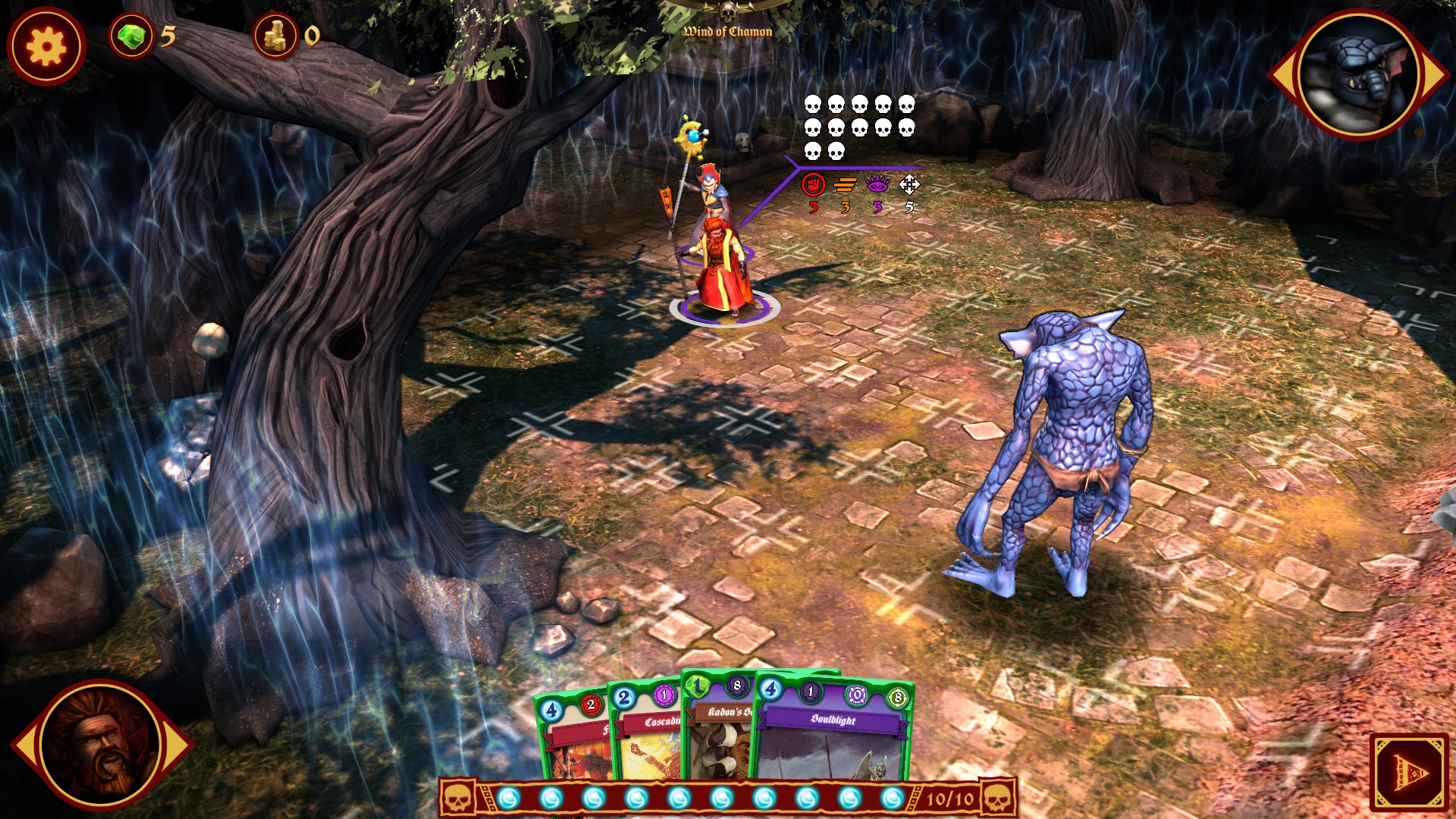
Normally I wouldn't be harsh on something just because it's a PC port of a mobile game, but everything about Arcane Magic feels limited by its origin, from the tiny battle maps, to the way scrolls are sold in "plunder packs," to the dual currencies. Fortunately the microtransactions have been disabled for the PC version, but the pacing is still designed around their presence and everything feels slightly off because of it.
The game itself? Basic turn-based tactics where your wizards cast spells from a hand of cards while they explore the Old World gathering lumps of magic rock. It would be boring even without its other problems.
💀23. Age of Sigmar: Realms of Ruin (2023)
Frontier Developments
Steam
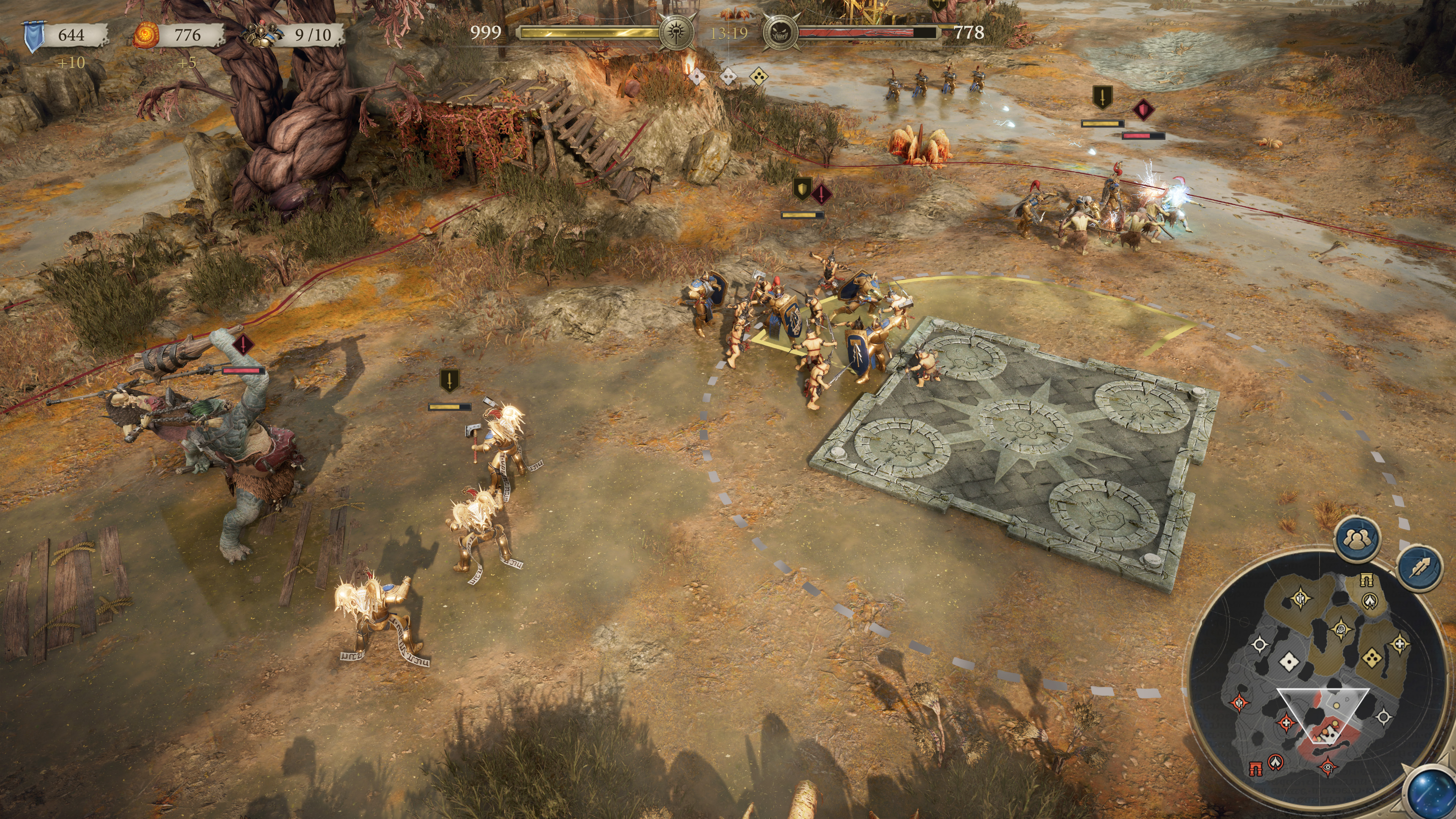
An RTS that sets the Stormcast Eternals up against Disciples of Tzeentch, Orruk Kruleboyz, and Nighthaunt, Realms of Ruin suffers from a familiar problem of scale. You have to micromanage some of your units because they've got fussy abilities like Charge, which can valuably stun opponents, but having to line that up in real-time means taking attention away from other units, like your ranged troops who refuse to shoot outside their firing arc and will get attacked from behind if you don't pay attention to them too. It doesn't help that the controls feel sticky and clumsy.
Meanwhile, you need to bounce between battles on multiple fronts because the enemy is attacking your muster point while you're trying to push back the fog of war to find your objectives and also churn out enough troops to keep up with the escalation. Of course, the more troops you have the harder it is to use them intelligently rather than shuffling them around like blobs. There's a rock-paper-scissors element to the combat system, but engaging with it in larger levels is a distraction too far.
The end result is a mish-mash of too much and not enough, which is exactly the same problem Dawn of War 3 had. It falls in the same barren middle ground between the epic scale of Dawn of War and the intimate squad tactics of Dawn of War 2, and it's galling to see another Warhammer game repeat the same mistake.
22. Warhammer Quest 2: The End Times (2019)
Perchang
Steam
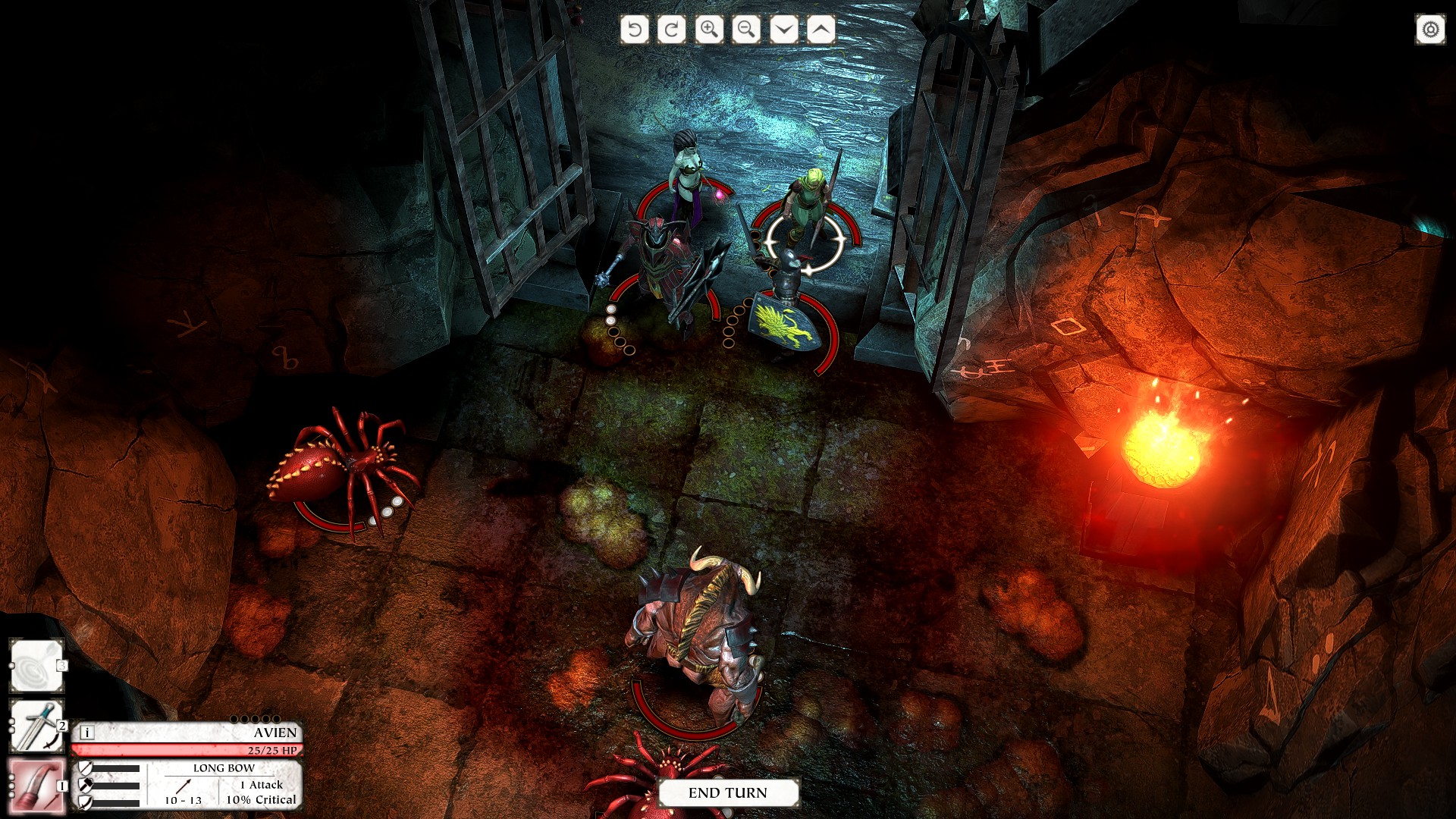
A turn-based dungeon crawler that uses the apocalyptic ending of the Warhammer world to justify heroic knights fighting alongside skeletons and dark elves dressed in fetishwear.
While the game it's a sequel to had difficulty options including permadeath, Warhammer Quest 2 has none. Instead you have to play a game that's hard enough you need to grind sidequests to keep up with the curve, while not having permadeath to make failure exciting. Instead when heroes fall they take injuries that weaken them until their next level-up, which means more grinding safe sidequests. I could tell you the fussy line-of-sight rules and the lack of the first game's text adventures also let it down, but the horse is already dead and there's no need to flog it.
21. Blood Bowl 3 (2023)
Cyanide Studio/Nacon
Steam | Epic
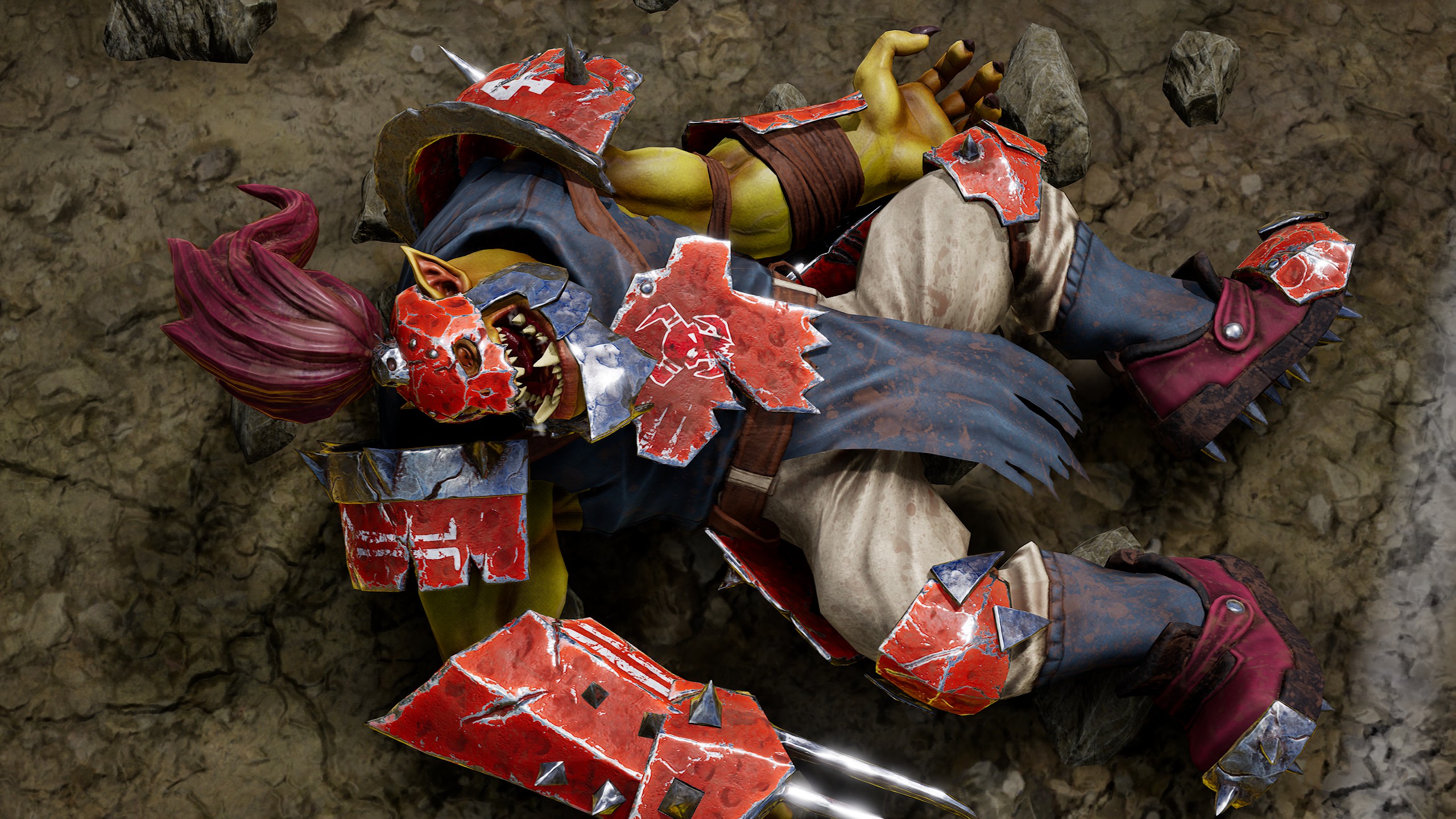
Cyanide's third attempt at Blood Bowl was hobbled by the 2020s trend of making everything a live-service game with seasonal content. It launched with features missing, but had a roadmap for three seasons' worth of battle passes and a modestly well-stocked in-game cosmetics shop.
The many problems BB3 had in both multiplayer and singleplayer ware galling because it's still quite fun when it works. But when it doesn't, when a pass is intercepted by someone nowhere near it, or when you realize basic features like crossplay and the special rules for star players are being saved for Season 3, it's impossible to keep faith in.es paused for long stretches while deciding what to do next. I've seen it freeze while trying to figure out whether to follow up after smacking a ball-carrier, waiting until both the turn timer and a full 7.30 minutes of bonus time runs down before the match continues.
The many problems BB3 had in both multiplayer and singleplayer are galling because it's still quite fun when it works. But when it doesn't, when a pass is intercepted by someone nowhere near it, or when you realize basic features like crossplay and the special rules for star players are being saved for Season 3, it's impossible to keep faith in.
20. HeroQuest (1991)
Gremlin Interactive
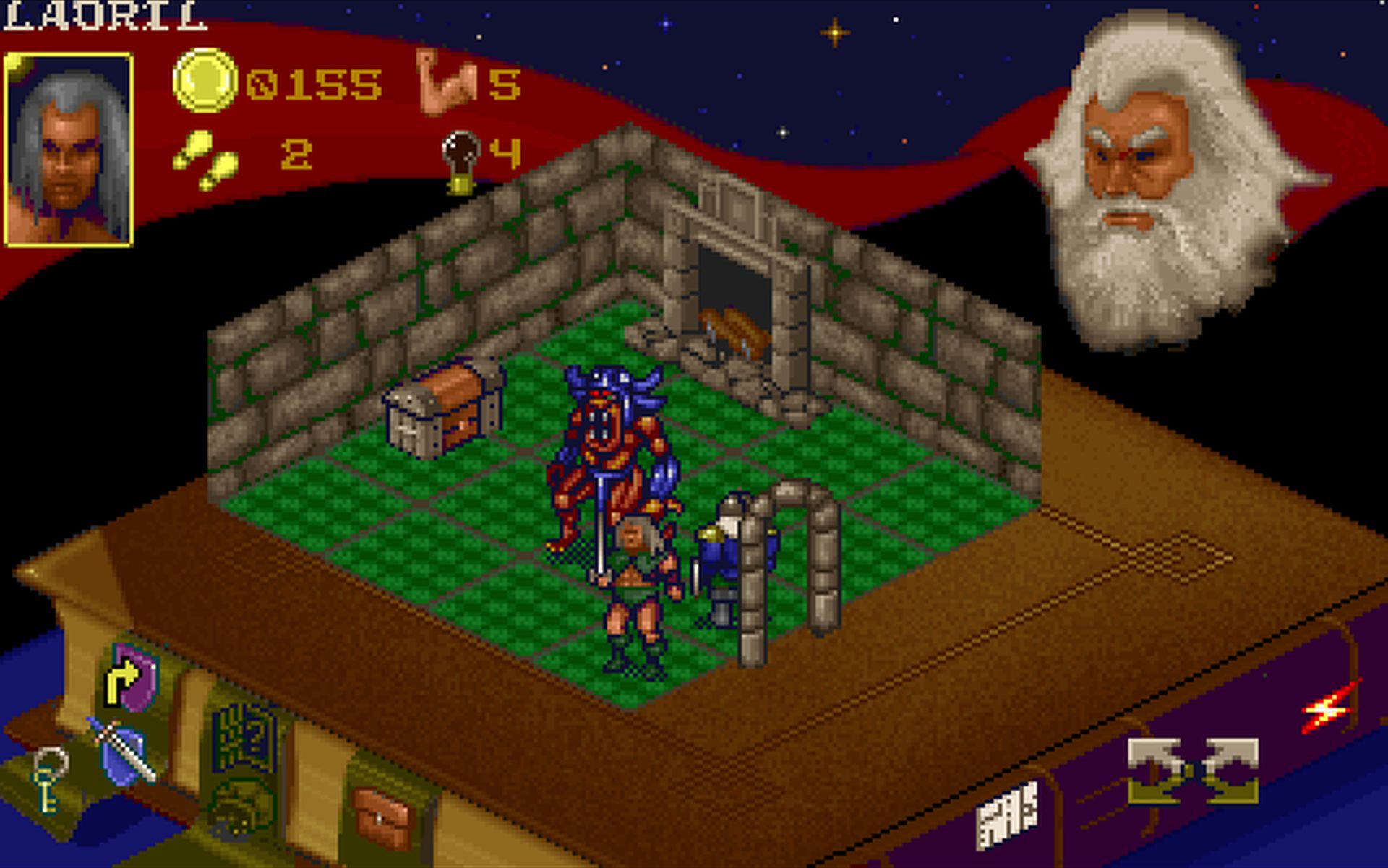
A potent double-dose of nostalgia, both for 1991 when it was released and for 1989 when I had the board game and played it alone after boring every adult who would sit down with me. HeroQuest was one of the classic dungeon crawl board games that acted as a gateway drug to RPGs, like Descent or Gloomhaven do today. The videogame is a direct adaptation down to the quests and intro text, though it's only able to display a slice of the board at a time and the heroes waddle about like toddlers with full diapers.
If you want to play HeroQuest on a computer with friends Tabletop Simulator has you covered, but if you want a half-bright AI for the monsters like you'd wished for as a lonely child in 1989, this is the drug for you. (Though note an app released at the same time as the deluxe rerelease of the HeroQuest board game can control the monsters and help you play solo.)
19. Mark of Chaos (2006)
Black Hole Entertainment/Namco Bandai
GOG
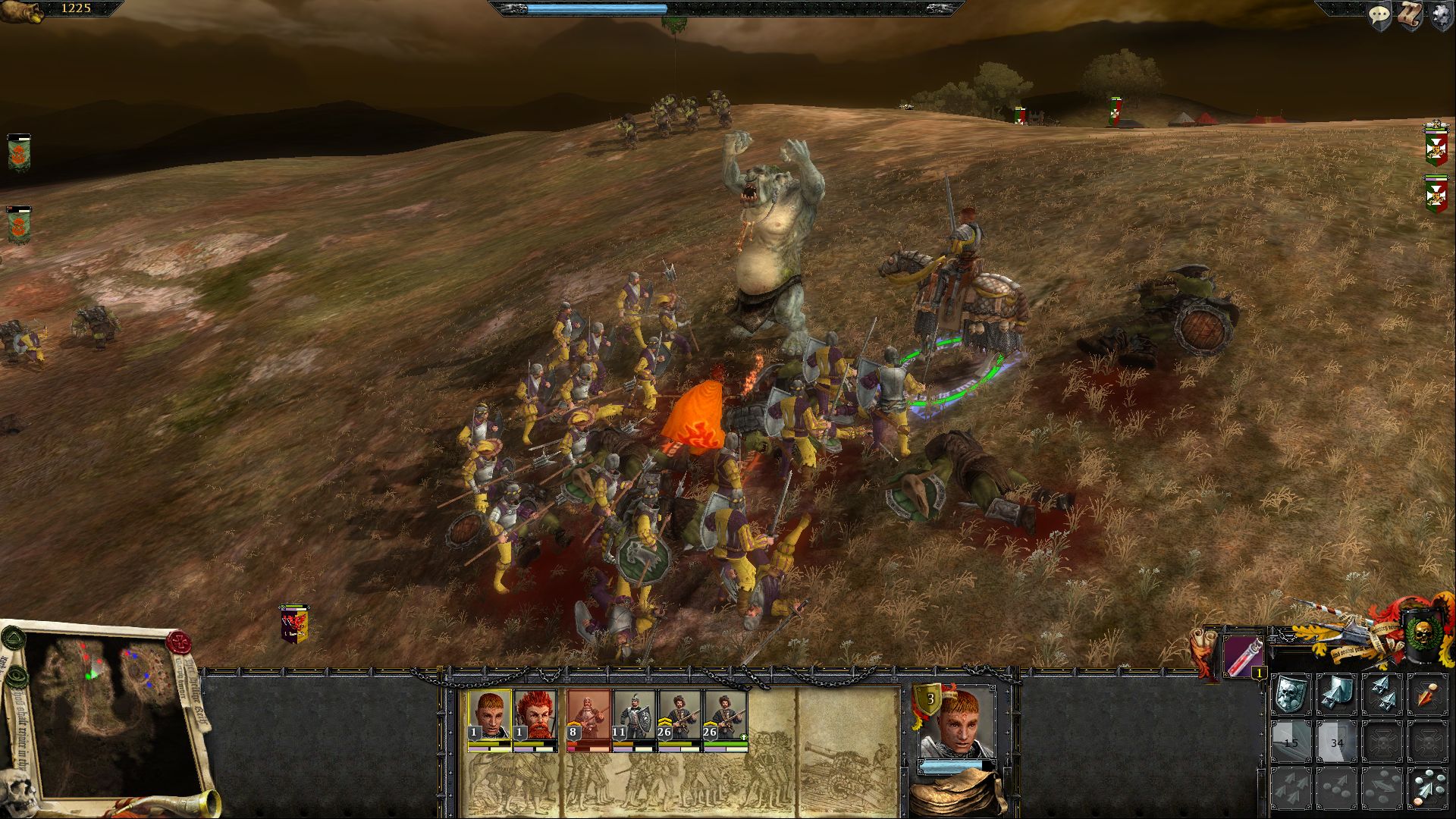
Two real-time Warhammer wargames preceded Mark of Chaos, and while it has the best UI of the three, with straightforward controls like mousewheel zooming, and the best graphics, with soldiers that look like the official miniatures of night goblins and Imperial halberdiers and so on, it still manages to be the worst of them. The animations aren't so great, all herky-jerky bent-arm swings, and heroes send ordinary troops flying a ridiculous distance with every blow. But the real problem is that Mark of Chaos is shallower than its predecessors, with too many battles that won't let you field your full army, and tactics more like a drag-and-drop RTS.
It doesn't have the earlier games' personality, either, which made up for their clumsier controls.
💀18. Warhammer Underworlds (2020)
Steel Sky Productions
Steam
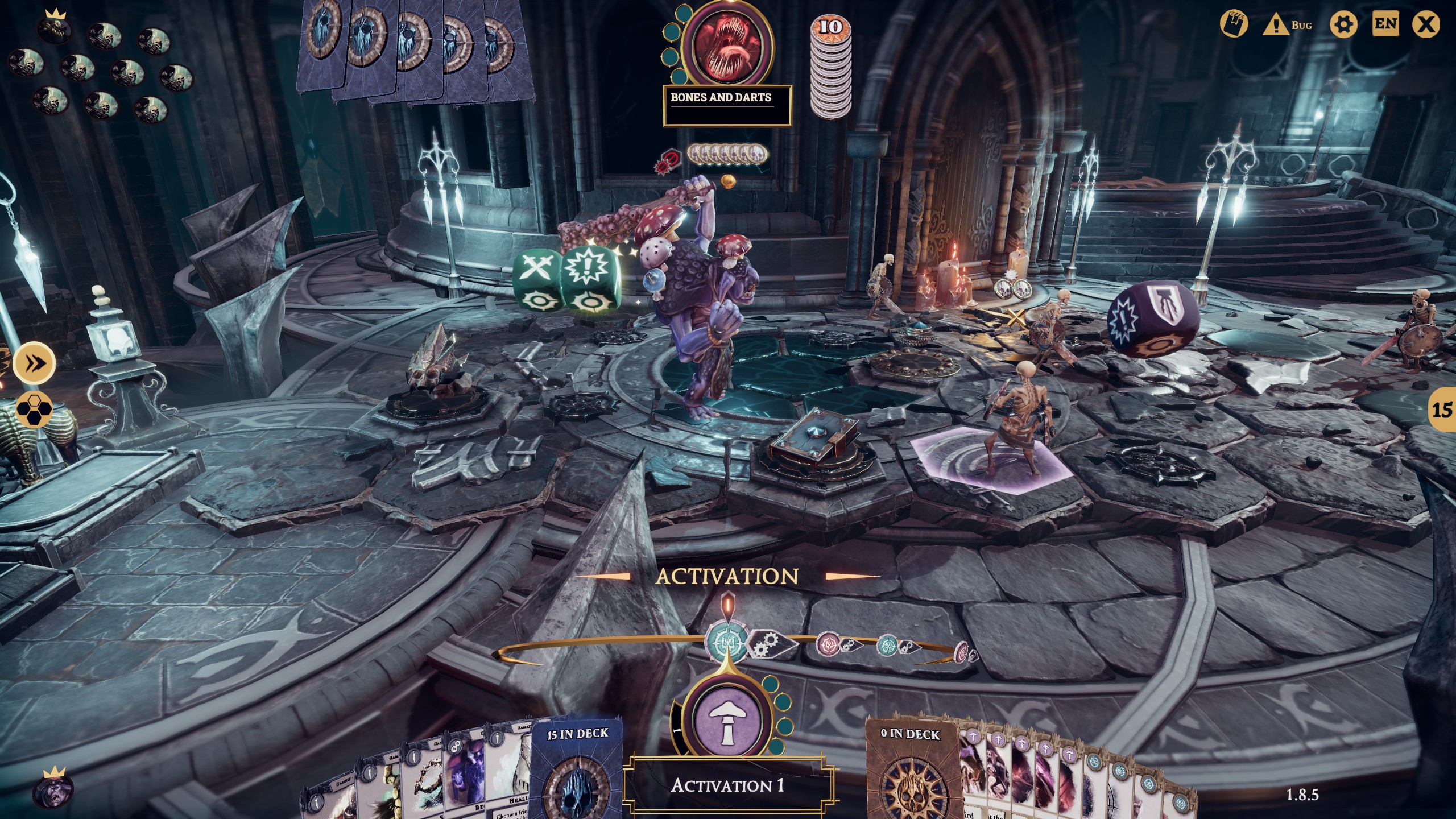
A one-to-one adaptation of a tabletop game, Underworlds takes the even more heavy metal high fantasy of Age of Sigmar and presents it at small scale. Squads of three or more warriors fight over objectives that look like leftover props from a D&D game.
Matches are only three turns long, which is often not enough time to wipe out an enemy—instead you win by completing objectives dealt from a deck of cards, which prioritizes thoughtful play and maneuvering over pure offense. There's a lot to learn, and a lot of potentially interesting tactics based around constructing a warband and choosing cards for both objectives and powers that suit them.
Thing is, your opponent's cards fly past in a blur and you have fistfuls of your own to keep track of. The UI makes it hard to keep track of each character's stats and modifiers and why the results of your dice rolls played out differently to what you expected. And thanks to the constant back-and-forth of reactions and interruptions, a hot-seat mode was declared not worth adding. Instead there's a small multiplayer community huddled around each time zone, and a set of boring challenges make up the meat of the singleplayer side. They did add an offline mode though, so that's something.
17. Chaosbane (2019)
Eko Software/Bigben Interactive
Steam | GOG
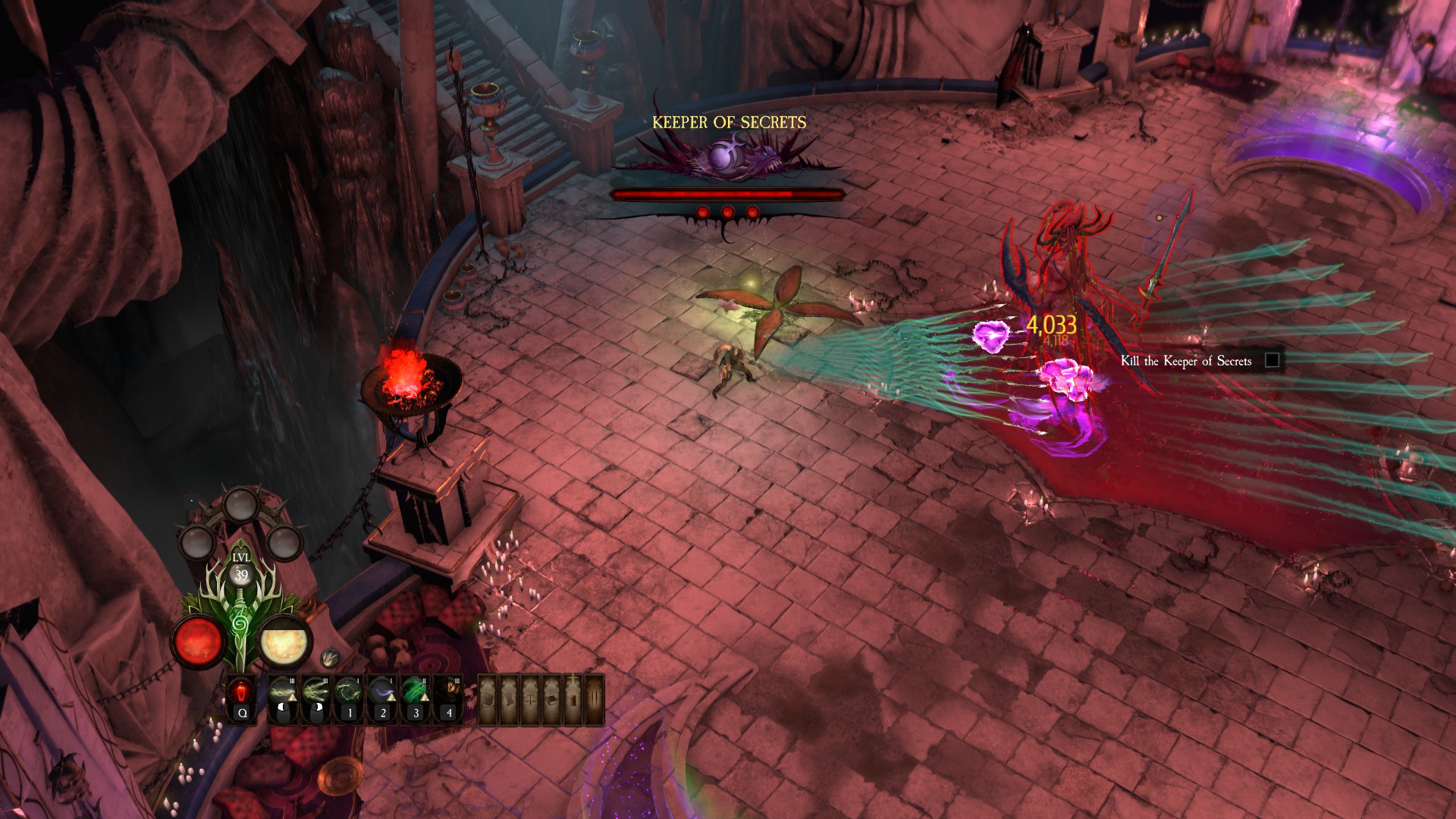
A competent Diablo-like action RPG with plenty of dark atmosphere and Nurglings who climb each other like circus acrobats to form tottering towers you can bash apart. Though let down by boss fights that dragged on thanks to their multiple health bars, and too many enemies in later acts that were just reskins of those from the first, post-launch updates gave Chaosbane a little more variety.
A dwarf engineer class and an extra act set in a corrupted gunnery school called Forges of Nuln were thrown in for free, while paid DLC added missions against the Tomb Kings in the Land of the Dead and a witch hunter class. The witch hunter's ability to switch between melee and ranged stances while summoning inspirational icons that can be upgraded to set fire to enemies make him quite decent, though base options like the dwarf trollslayer are just as fun.
16. Mordheim: Warband Skirmish (2017)
Legendary Games
Microsoft Store
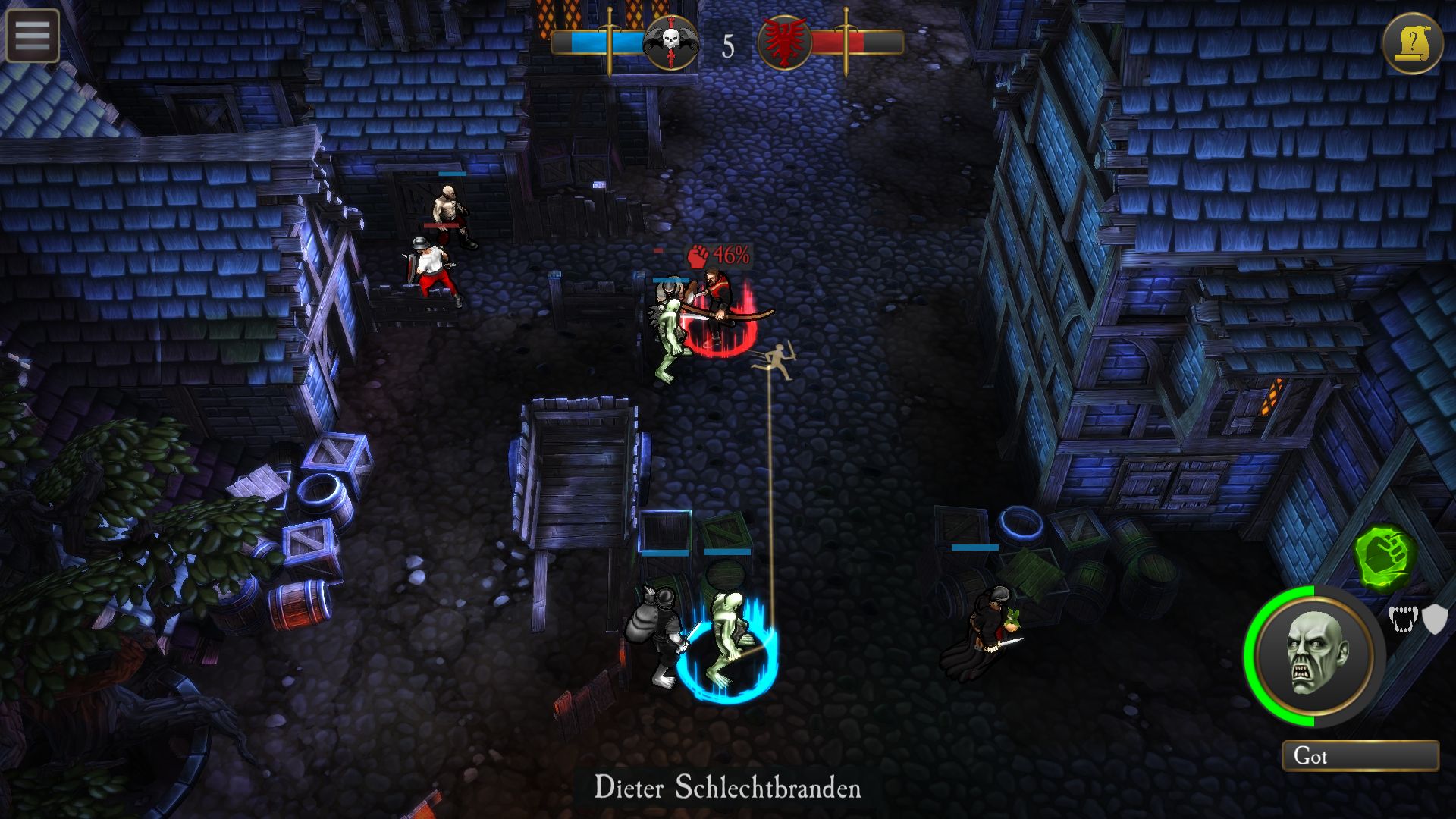
In 1999 Games Workshop released a skirmish-scale tabletop game set in the ruins of the comet-smashed city of Mordheim, where warbands squabble over shards of magic "wyrdstone." There have been a couple of digital versions, like this one which was originally released for mobile. Its mobile origins show, but in ways that actually add to it.
The Clash of Clans-style models look agreeably like plastic figurines and the short duration of battles gives it the snacky quality that makes Into the Breach and XCOM: Chimera Squad easy to pick up and play. With its traditional top-down view, it's also more likely to set off any nostalgia you may have for the tabletop game than Rogue Factor's more ambitious version, a few spots down the list.
Finally, though I hesitate to say it in a ranking of PC games, this simple between-meals strategy game is available on Switch. I leave you to do with this information as you will.
15. Man o' War: Corsair (2016)
Evil Twin Artworks
GOG
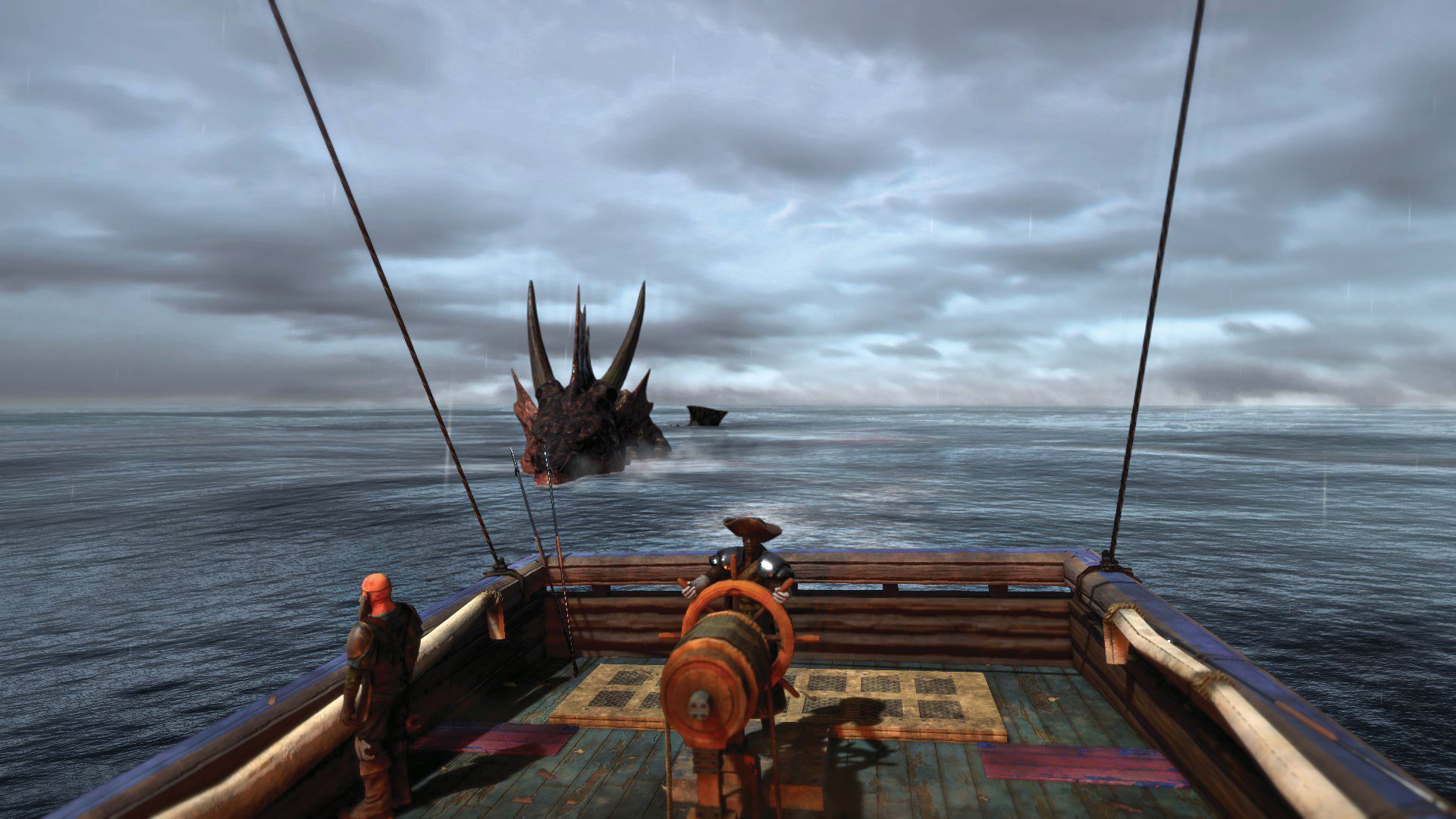
You get to be captain of your own ship. What's not to like? Well, AI so bad at sailing that escort missions are a write-off, flying enemies that screech constantly and are hard to target, and janky dueling animations. So a fair amount, actually.
And yet, because Man o' War gives you so much freedom in how you play, most of that doesn't matter. You can concentrate on trade, buying from ports that produce goods in quantity then selling where they're in demand. Or keep the wind at your back while finding firing solutions for the perfect broadsides. Either become a monster hunter, or just turn sea monsters off completely in the menu. It lets you concentrate on the undeniable fun parts of being a Warhammer pirate and give a wide berth to the rest.
If you have fond memories of Bethesda's almost-forgotten Pirates of the Caribbean game, Man o' War is quite similar. If you thought Sid Meier's Pirates! would be better with orcs, this is that.
💀14. Age of Sigmar: Champions (2019)
PlayFusion
Steam
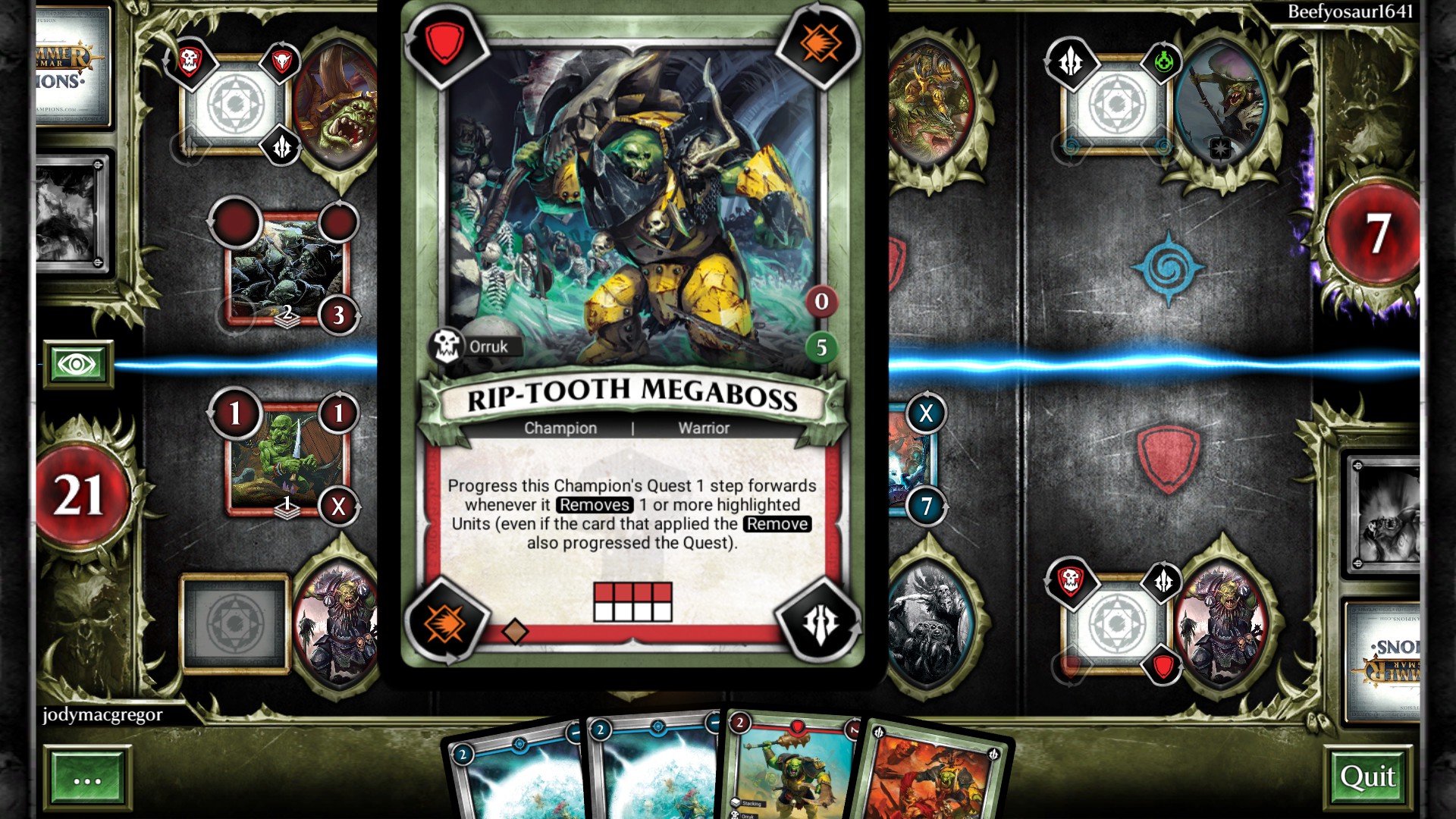
I'm leaving this here in memoriam for a good game not just delisted but deleted, its servers shut down and even the singleplayer mode no longer accessible. It's a shame because Age of Sigmar: Champions was unusual among the digital adaptations of Games Workshop's physical games in that it was a direct adjunct to a collectible card game, allowing players to scan in their physical cards with a webcam or phone app and then use them in the videogame version. As a standalone free-to-play videogame it was decent, with nice card art and some unusual mechanics, like the way unit cards rotate each turn, with different effects on each rotation. It really came into its own if you had a deck of the no-longer-printed actual cards, however, or picked some up second-hand and treated this as a companion app.
13. Age of Sigmar: Storm Ground (2021)
Gasket Games/Focus Home Interactive
Steam | Microsoft Store | Epic
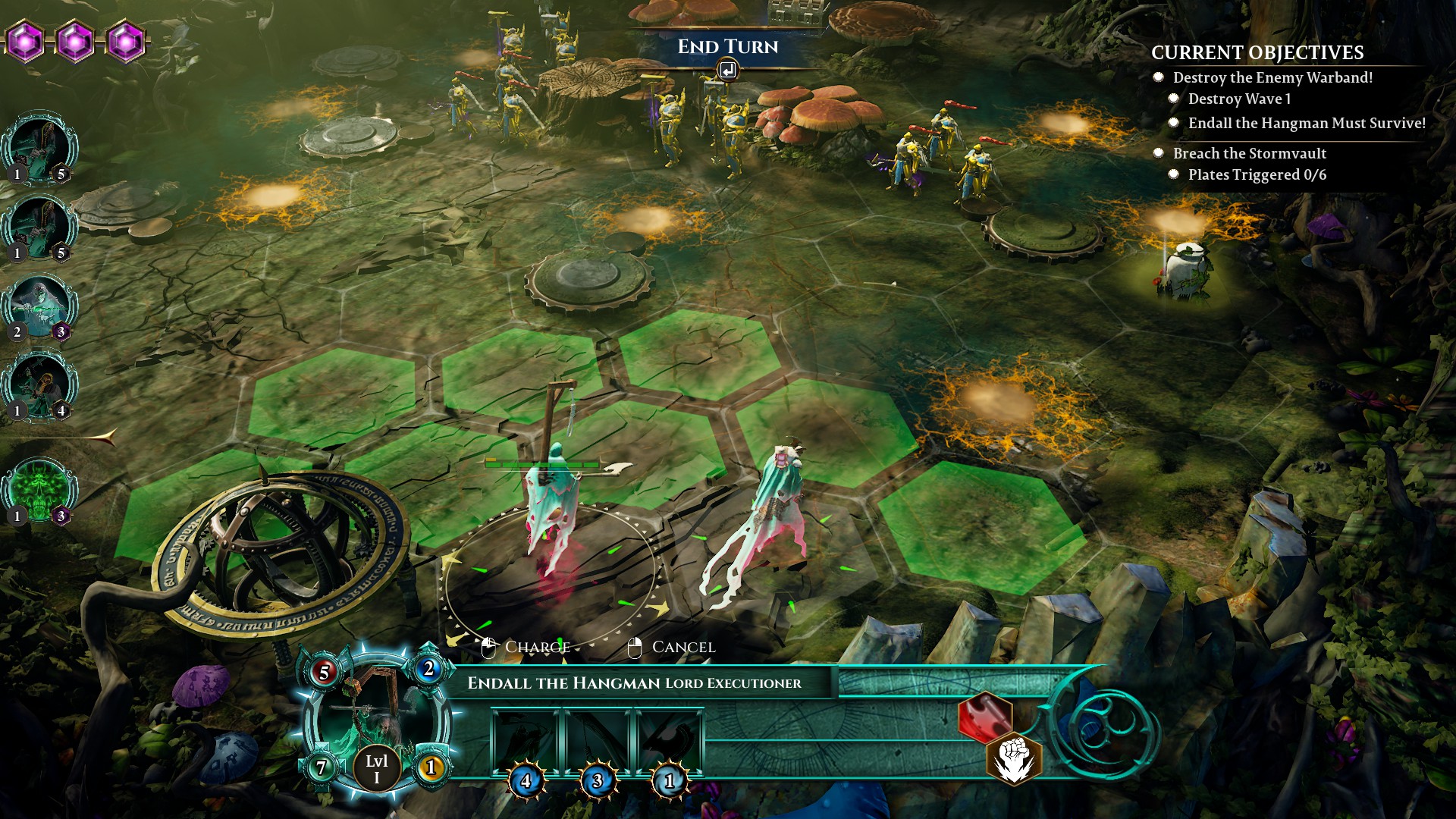
The Stormcast Eternals are holy lightning warriors who (usually) come back after death. Each reforging steals some of their memories and personality, however, leaving them metal shells of their former selves. They're ideal protagonists for a roguelike—imagine Hades with hammers. Now stop imagining that, because while Storm Ground has roguelike progression it combines that with turn-based tactics.
The other playable factions are well-chosen, the undead Nighthaunt and daemonic Maggotkin both just as likely to return from death as the Stormcast Eternals. The Maggotkin in particular are fun to play, vomiting corruption that heals them and hurts others, and from which more of their units can spawn. The undead have executioners who carry combat-gallows, and the Stormcast specialize in knockback attacks that can set up chains of damaging collision.
When you get to grips with it, Storm Ground is thoroughly decent. It's hard to get to that point unfortunately, because it's determined to be opaque. No tooltips, no rules reference or manual, and a lot of things have to be learned by trial and error. The "+1 squad summon" skill just straight-up gives you a free copy of whatever unit you equip with it, and other skills can work in surprising ways. The same is true of units: you expect banshees to have a scream ability, but the fact they explode on death, damaging and pushing back anyone around them, is a bit of a shock. In roguelikes trial and error is punishing, but it's worth learning to play Storm Ground in spite of itself.
12. Blood Bowl (2009)
Cyanide Studios/Focus Home Interactive
Steam
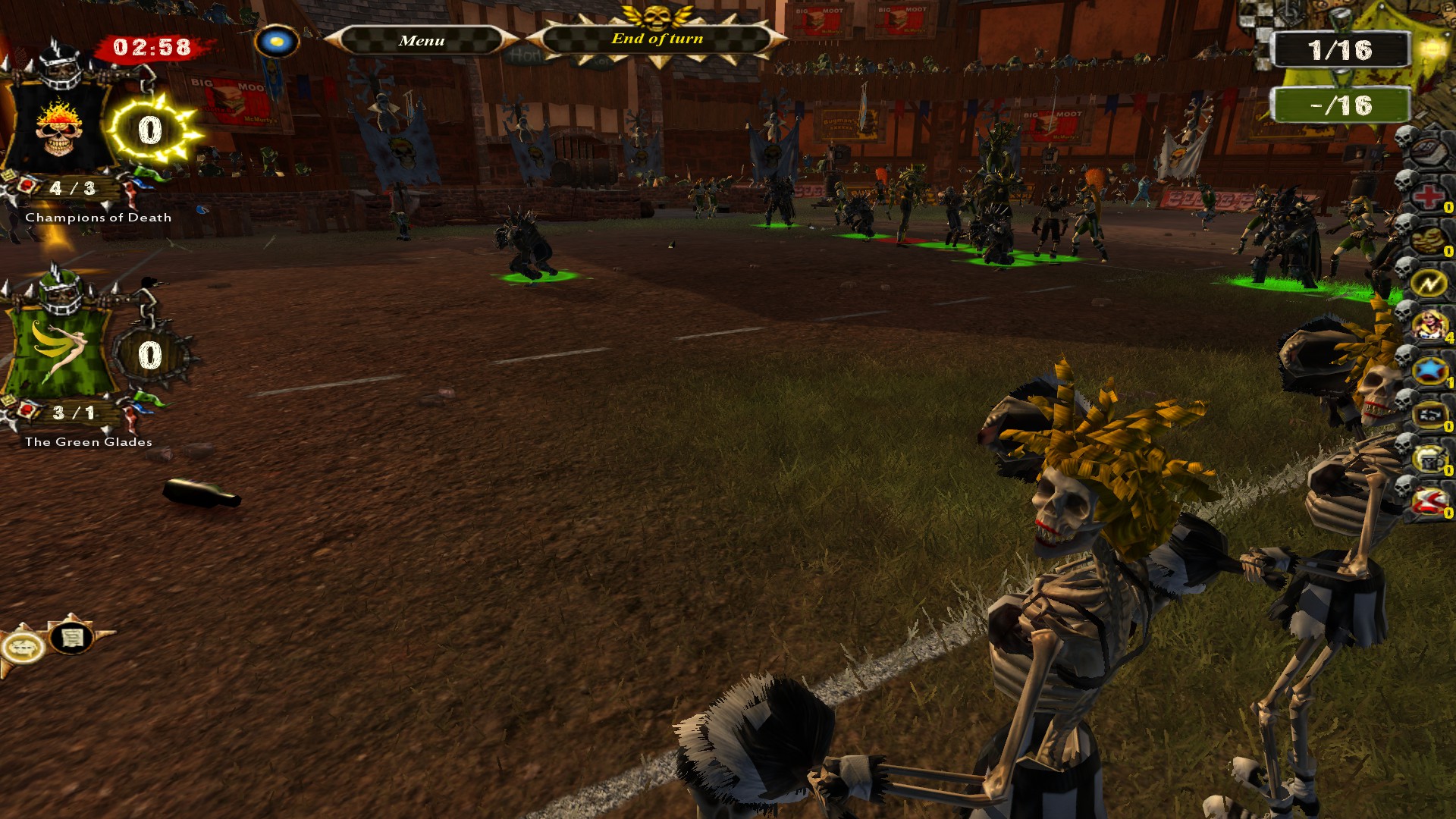
Cyanide's first take at Blood Bowl was actually their second, as they'd previously made a game called Chaos League that was so close to it that Games Workshop's lawyers came around for a quiet word. One out-of-court settlement later and Cyanide somehow managed to score the rights to develop an actual Blood Bowl game, which they did a competent job of. Then they released two more versions of the same game—the Legendary and Chaos editions—each slightly expanding on the last.
While their eventual 2015 sequel has a better UI and nicer looks, one thing I missed from this version was the truly demented variety of weird cheerleaders, especially the skeletons with pom-poms.
11. Shadow of the Horned Rat (1995)
Mindscape
GOG
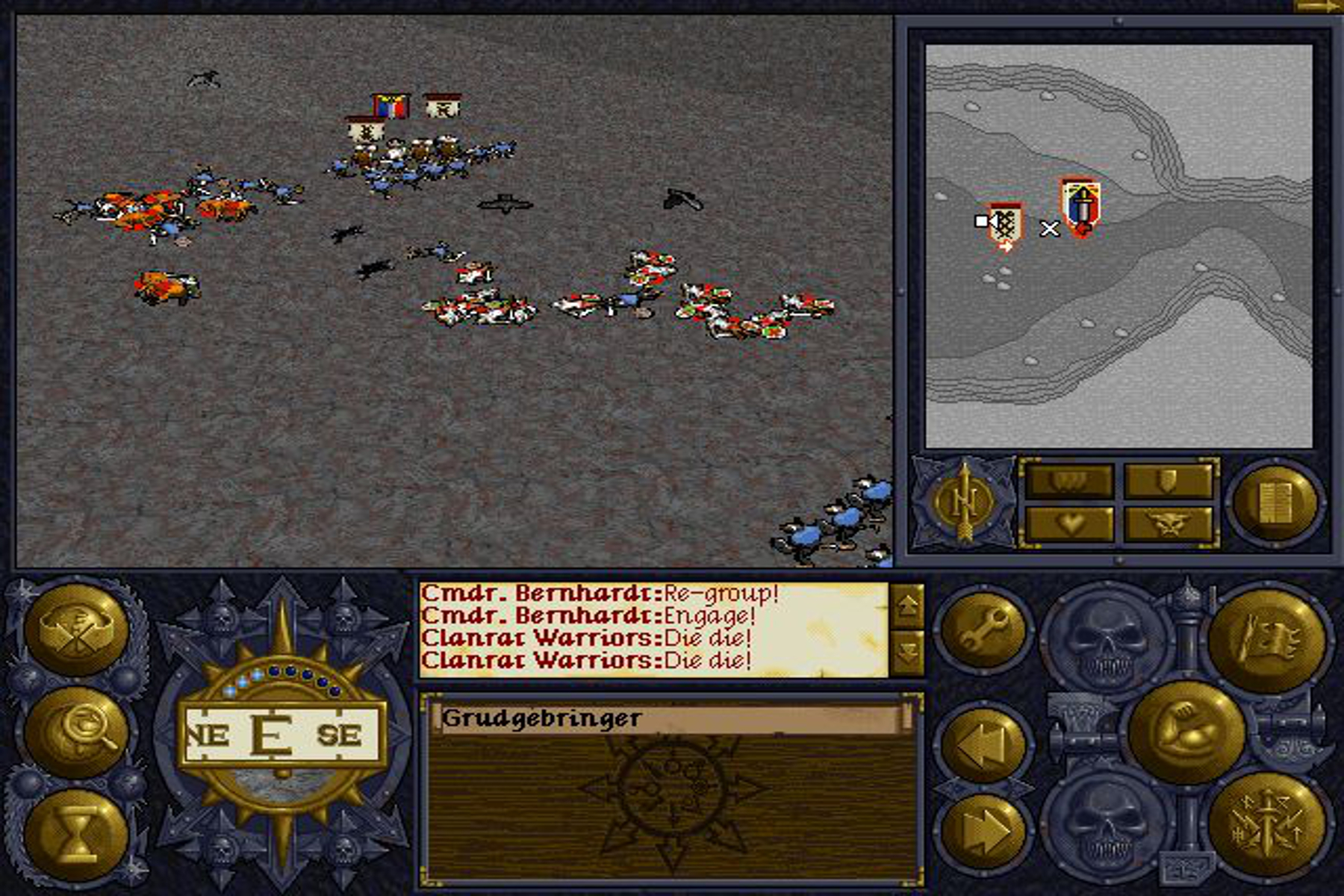
This first attempt at a real-time Warhammer wargame gives you command of a mercenary company known as the Grudgebringers. From this initial command of two units, one Imperial cavalry and one infantry, you branch out unit-by-unit to eventually field everything from wood elf archers to dwarf gyrocopters, fighting against greenskins and skaven.
These units are represented by basic sprites in a battle view limited to a corner of the screen, but what Shadow of the Horned Rat lacks in finesse it makes up for in personality, with a cast full of Monty Python-esque accents delivering mission briefings, cutscenes, and battle cries. You'll have to tweak compatibility settings to get it running today (Windows XP Service Pack 2 mode works for me), but it's worth it.
10. Warhammer Online: Age of Reckoning (2008)
Mythic Entertainment/Electronic Arts
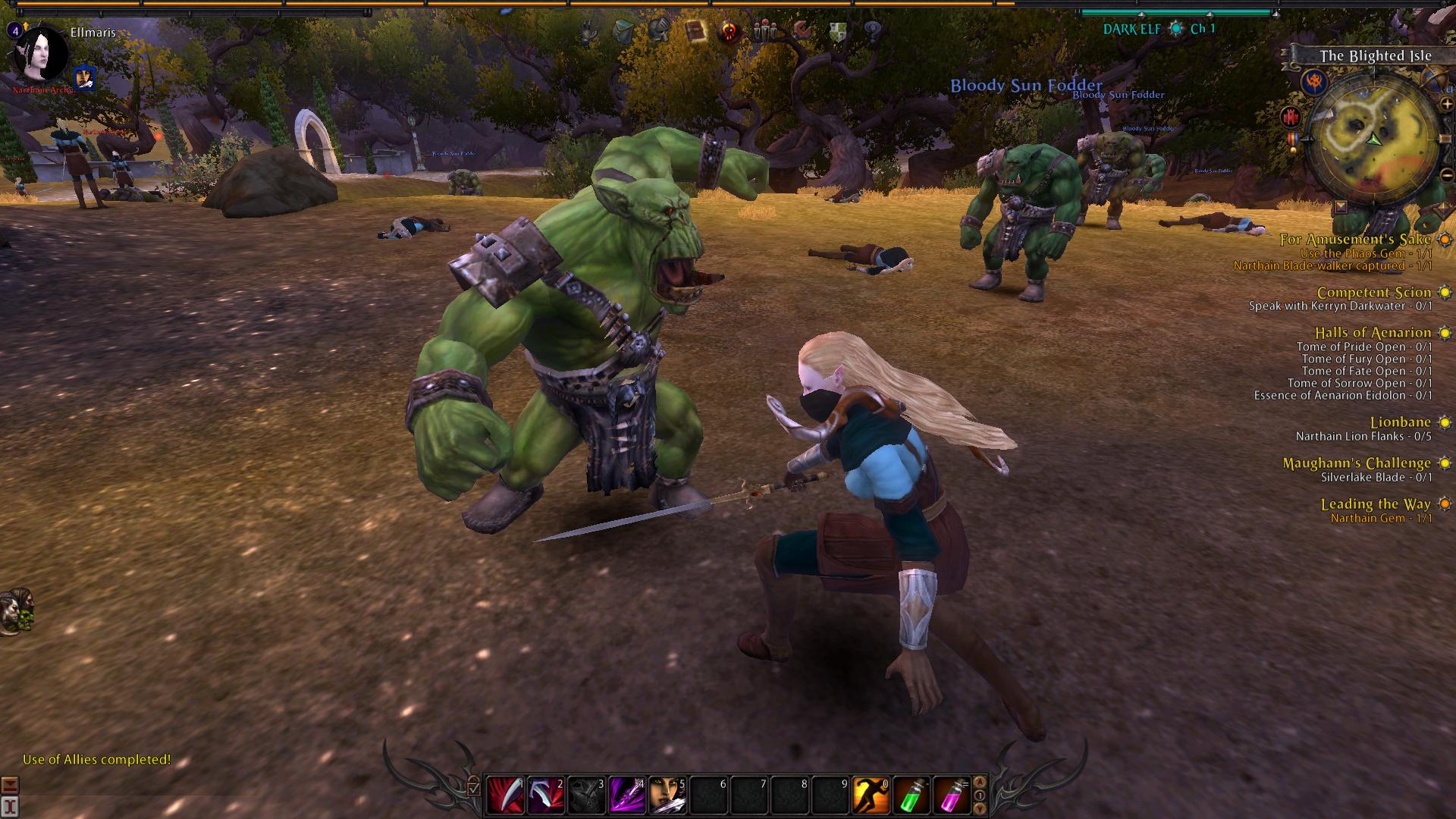
Pour one out for Warhammer Age of Reckoning, aka WAR, yet another MMO too beautiful to live. What's that? You can play it today on community-run servers, and though there are some bugs and player numbers aren't always what they could be you can still have a good time? Hell, put that drink back in the bottle and go check it out.
WAR may have squeezed itself into a World of Warcraft-shaped mold to its detriment, but it also did great stuff with realm-versus-realm combat, public quests, and a set of classes that were all cool in different ways. Like City of Heroes, it deserves this second chance as a community-run MMO.
9. Mordheim: City of Damned (2015)
Rogue Factor/Focus Home Interactive
Steam | GOG
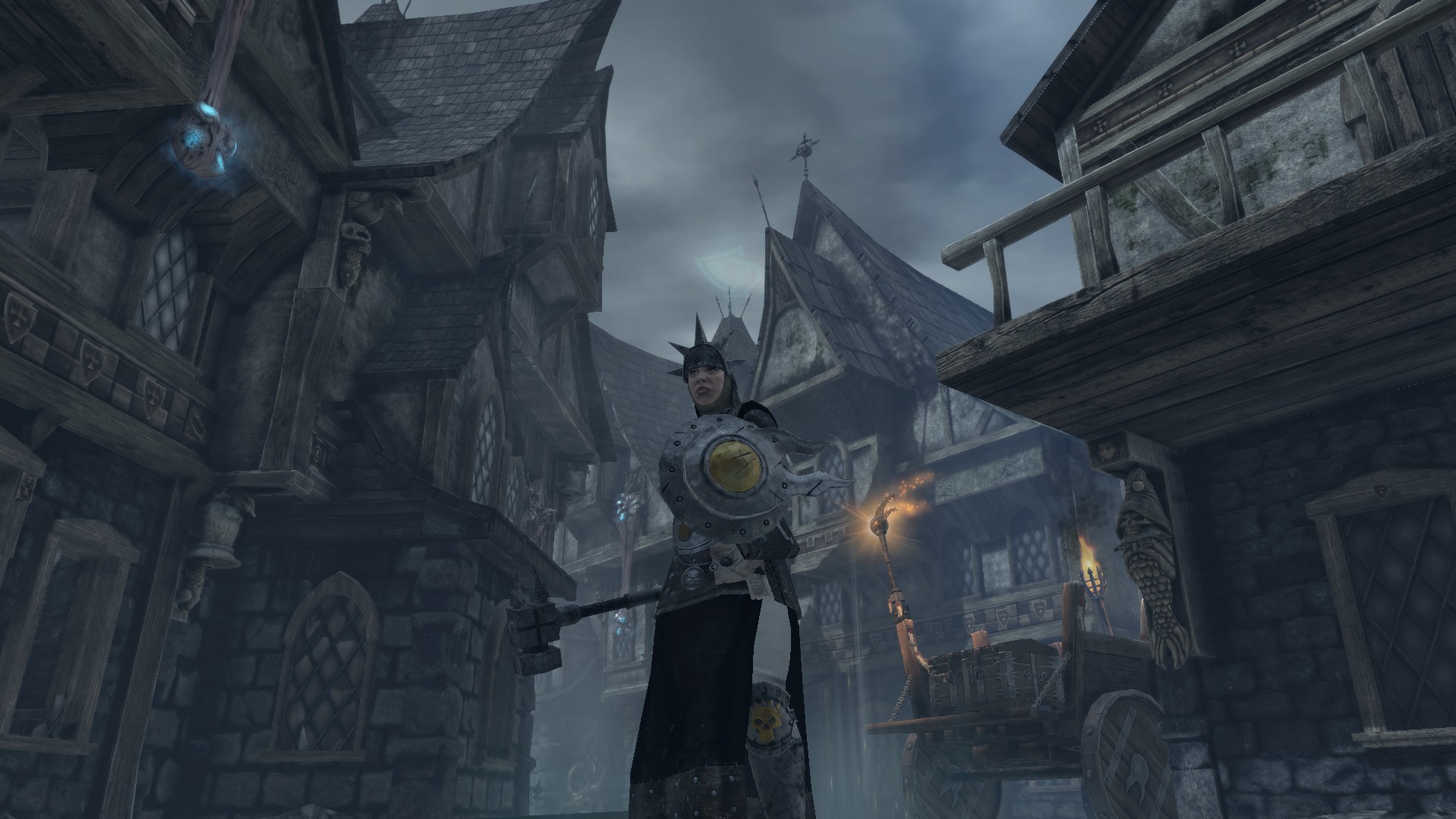
It takes a minute to wrap your head around the combination of over-the-shoulder camera and turn-based tactics in Mordheim: City of the Damned (it's a bit like Valkyria Chronicles only with overwatch rather than enemies just constantly firing infinite bullets on everyone's turn). By "it takes a minute", what I really mean is "it takes your entire first campaign, which you will lose."
Mordheim isn't just XCOM from a different angle, it's XCOM where the Long War on Iron Man mode is the only way to play. Your bosses demand payments on tight deadlines, story missions are brutal, and warriors lose limbs about as often as I misplace my phone. Mordheim gets away with this harshness because the playstyle it encourages—cautious, paying attention to the enemy's abilities, learning the 3D maps in a way your ground-level view facilitates—becomes gripping once you're carefully shepherding a band of warriors with missing arms and concussion through its ruined city.
8. The End Times: Vermintide (2015)
Fatshark
Steam
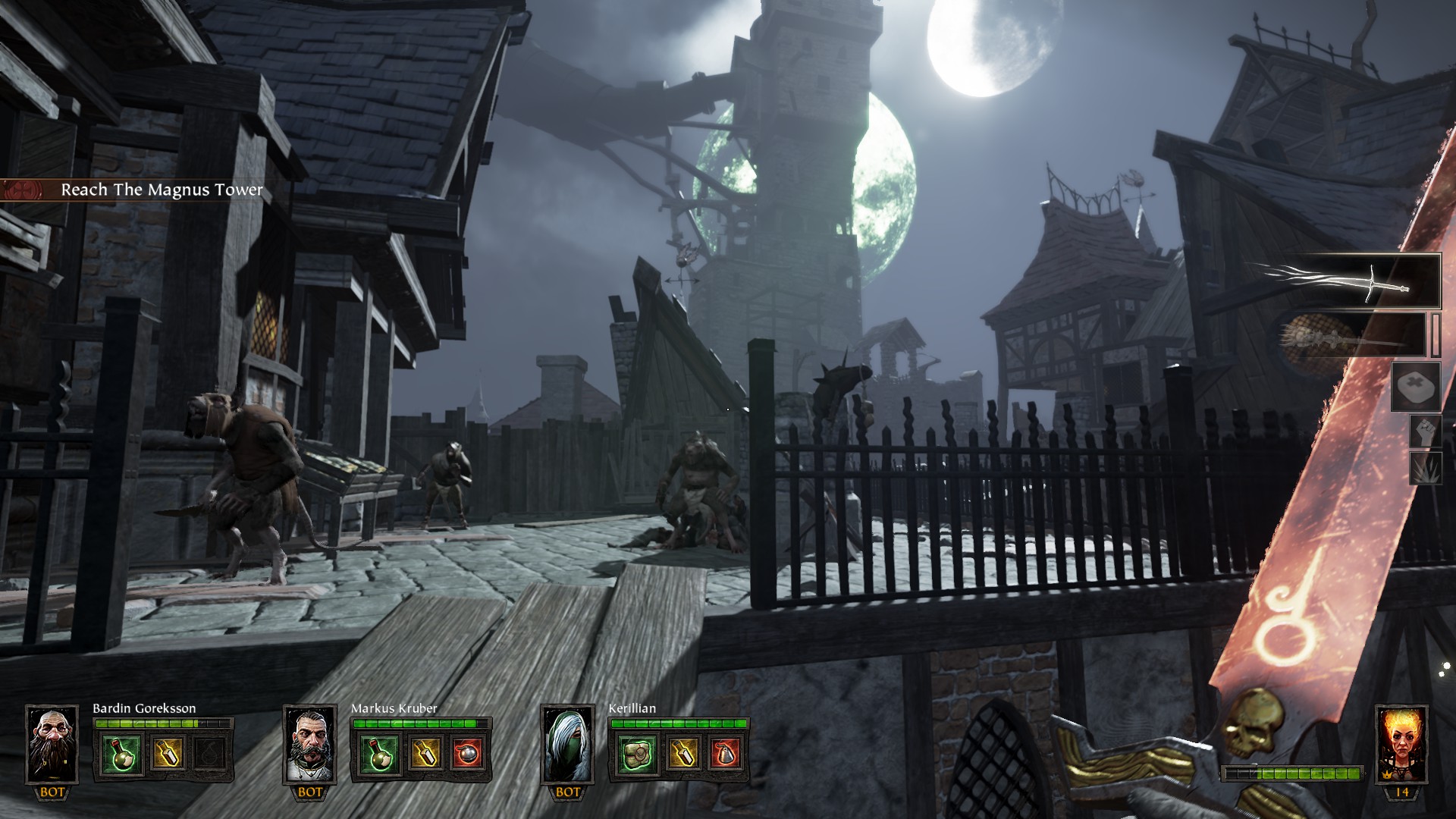
Once Valve stopped releasing Left 4 Dead games it fell to others to give us what we needed—that sense of being outnumbered but unwilling to fall, backed by our closest friends who may or may not be internet strangers. Vermintide did that well, with heroes who have enjoyably outsized personas up against skaven with no sense of self-preservation. Though its melee weapons didn't have quite the punchiness of those in the sequel, the original Vermintide relied less on leveling up and opening boxes of slightly better gear. If that slow gear accrual turns you off Vermintide 2, this first game remains a blast today.
7. Warhammer Quest (2015)
Rodeo Games/Chilled Mouse
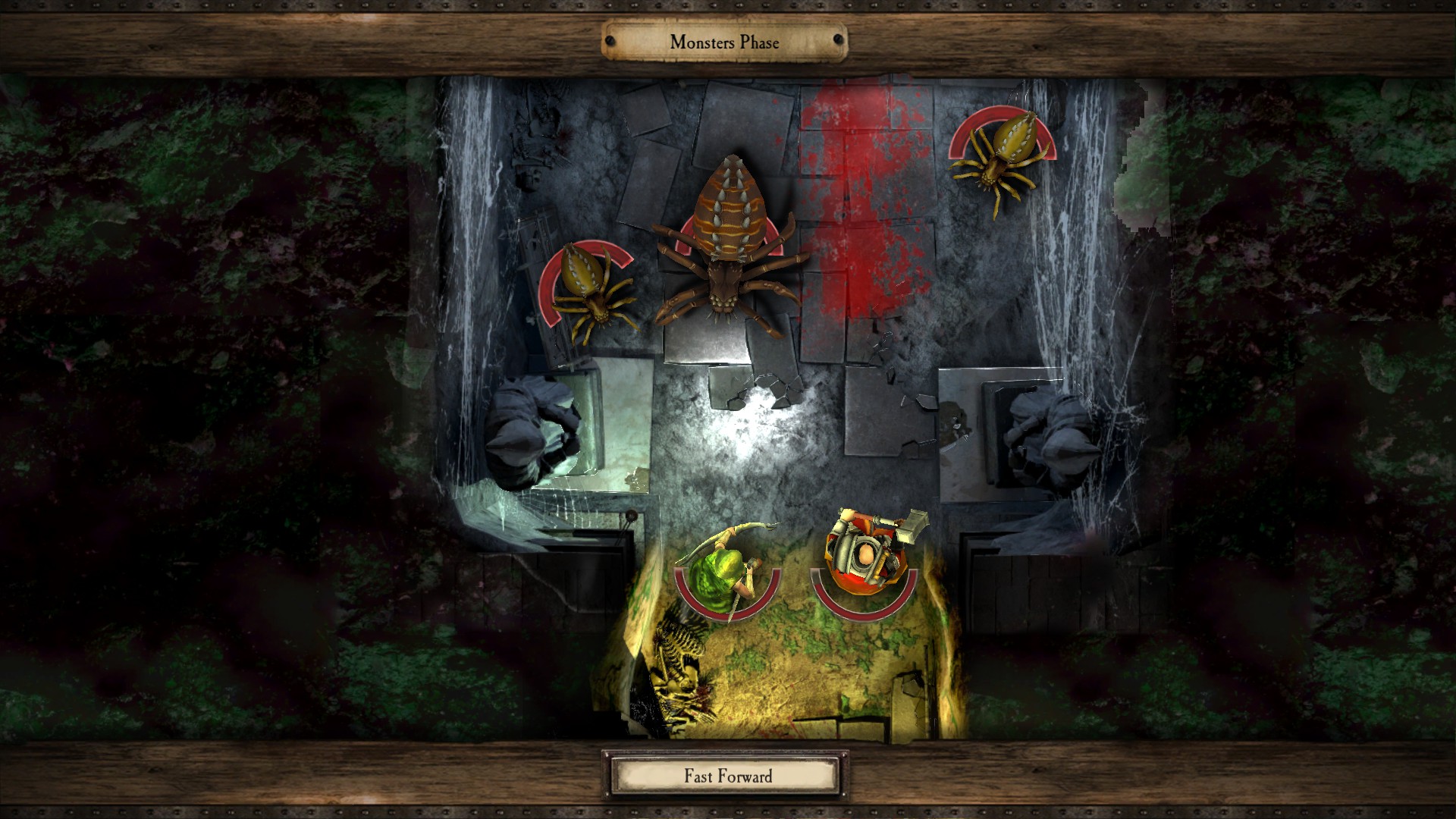
Halfway between the roll-and-move simplicity of HeroQuest and the this-box-actually-contains-a-universe complexity of Gloomhaven was Warhammer Quest, a dungeon crawler with just the right amount of downtime friction between dungeons.
Boxes of text presented simple decisions, like "Do you loot the tapestries or save the villagers' donkey from being eaten?" Towns assembled themselves up out of the map like in the Game of Thrones credits so you could go shopping or visit the temple for a blessing. It was basic in presentation, perfect for an old laptop, and because it started as a mobile game and (horror of horrors) had DLC it was underrated, but Warhammer Quest is actually quite good indeed.
6. Blood Bowl 2 (2015)
Cyanide Studios/Focus Home Interactive
Steam
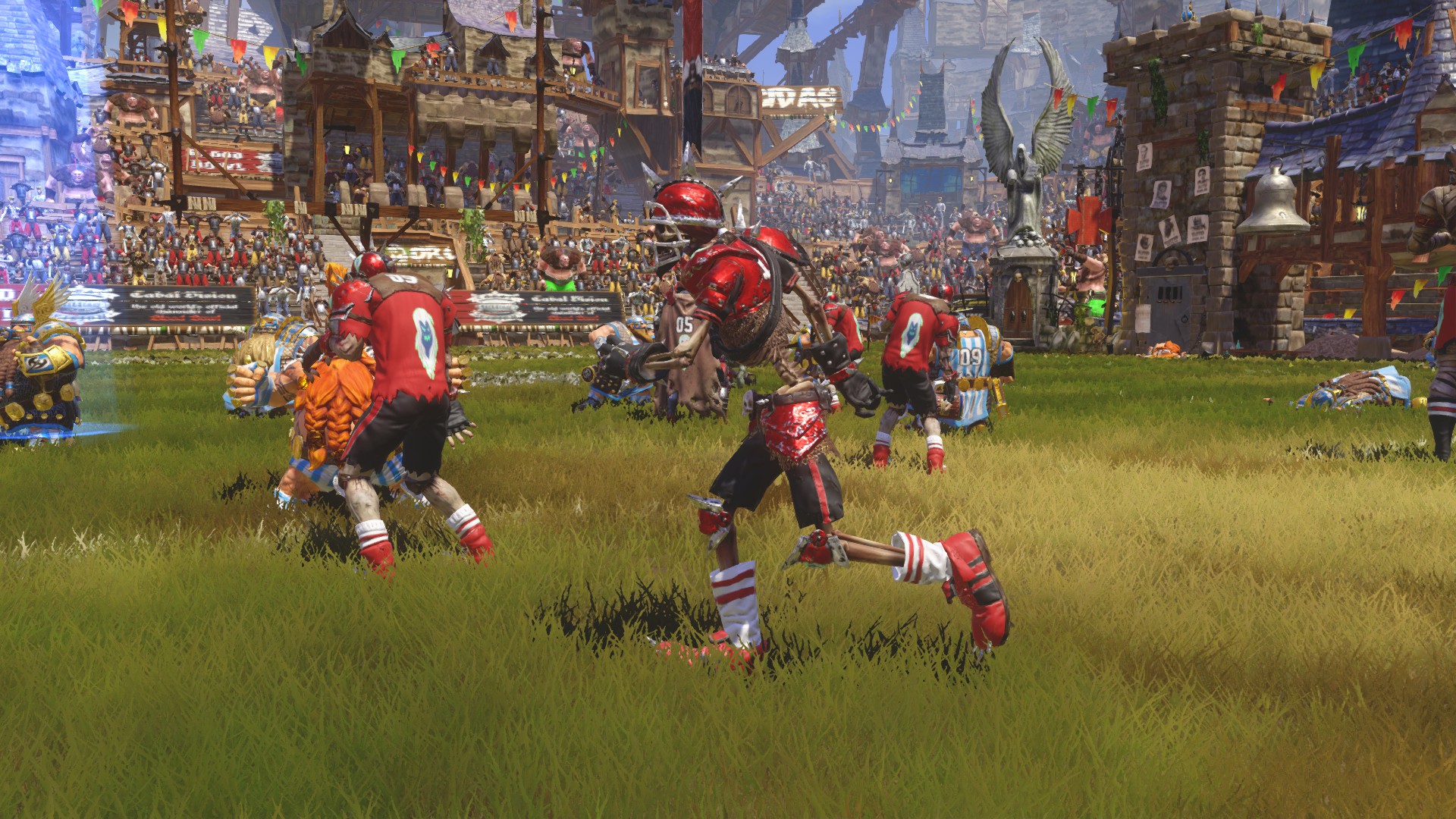
On the one hand Blood Bowl 2 is a game that does a terrible job teaching you how to play it. The singleplayer campaign tries to be a tutorial, but introduces core ideas too slowly and only lets you play as one team. Meanwhile, the AI is so rudimentary I've played for over 70 hours and rarely seen it throw a pass. And yet, I have played it for over 70 hours, because Blood Bowl 2 is strong where it actually needs to be.
It takes the wonderful board game about skeletons failing to pick up footballs and puts it on PC more slickly than ever, with multiplayer and an endless league mode, adds some daffy animations and calls it a day. If you don't love the board game you'll never understand this, but if you've spent pleasant evenings at the table learning how to organize your turns so that you can get as much done as possible before Johnny Bones fumbles the ball and causes a turnover, this is glorious.
The Top 5
5. Dark Omen (1998)
Mindscape/Electronic Arts
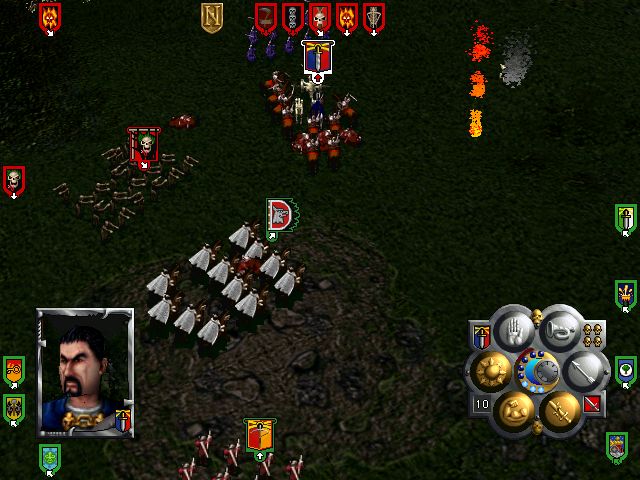
The sequel to Shadow of the Horned Rat kept the real-time tactics battles and the structure of a mercenary company slowly building a diverse roster over the course of a campaign, and improved almost every other element. Instead of the action taking place in a corner window it's 3D and fills the screen. The UI gets out of the way and the faces of soldiers pop up to shout as they charge or flee like you're in a videoconference with an entire battlefield.
If it had more enemies than just undead and greenskins, it might be perfect. As it is, if you like the battles from Total War but don't want the strategy stuff getting in the way, here you go. You'll need some help from PC Gaming Wiki to get it running today (downloading EngRel's "3D Fix & Extreme Camera zoom & Overhead Map" did the trick for me), but it's worth it. There's a modding community too.
4. Total War: Warhammer (2016)
Creative Assembly/Sega
Steam | Epic
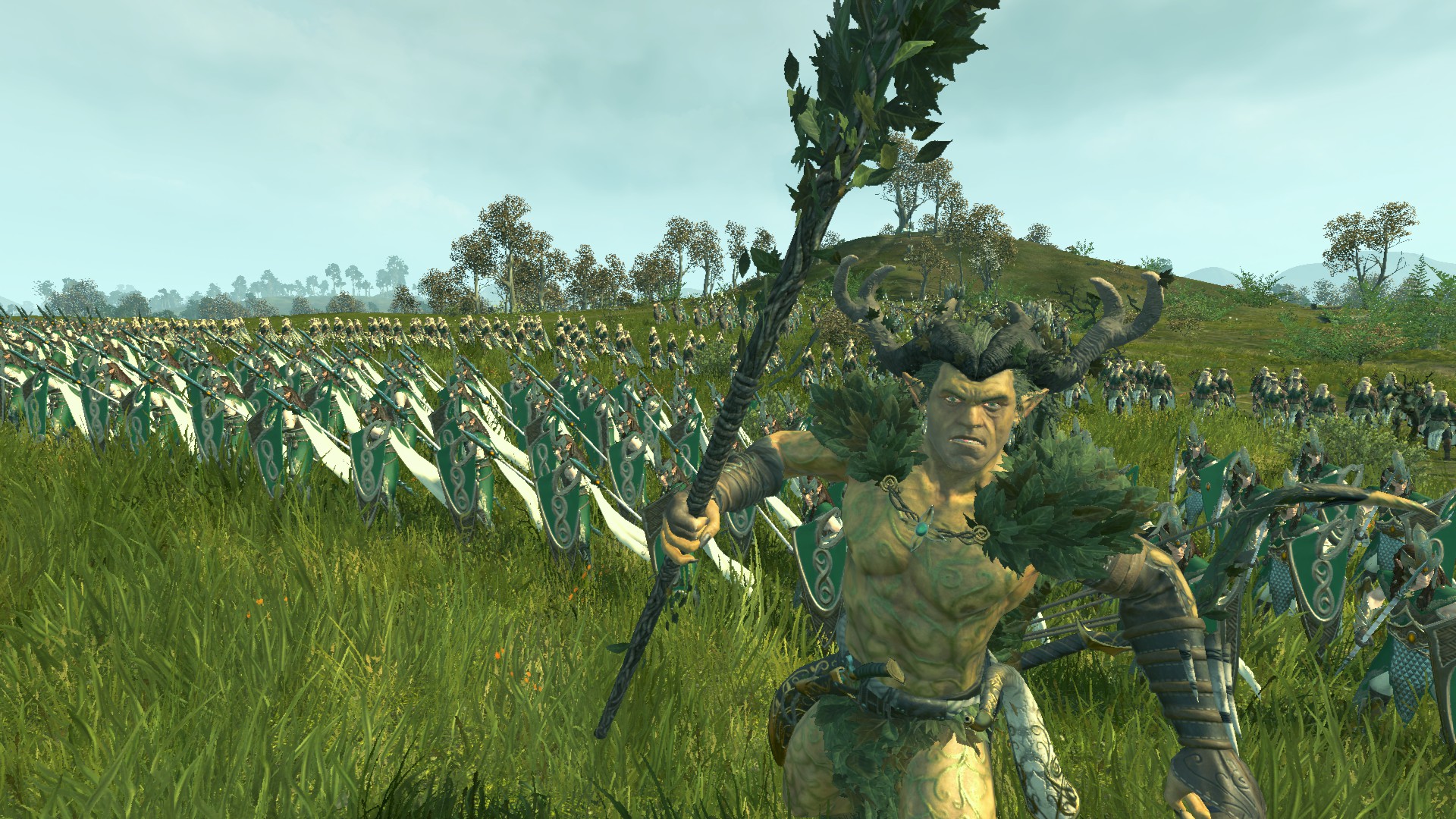
The Warhammer mods for Rome and Medieval 2 proved there was an audience for a Total War: Warhammer, but it still felt like a miracle both that it finally happened, and that it was done so well. The factions feel distinct and make you want to actually play the campaign more than once, and it cleverly ditches some of the series' more indulgent elements like lineages and seasons to create a streamlined version of Total War, one that feels suited to fantasy bash-ups whether you're playing honor-driven Brettonian knights or headbutt-hungry orcs.
The sequels are better, but if you're particularly devoted to one of the factions in the first game I'd still recommend it.
3. Vermintide 2 (2018)
Fatshark
Steam
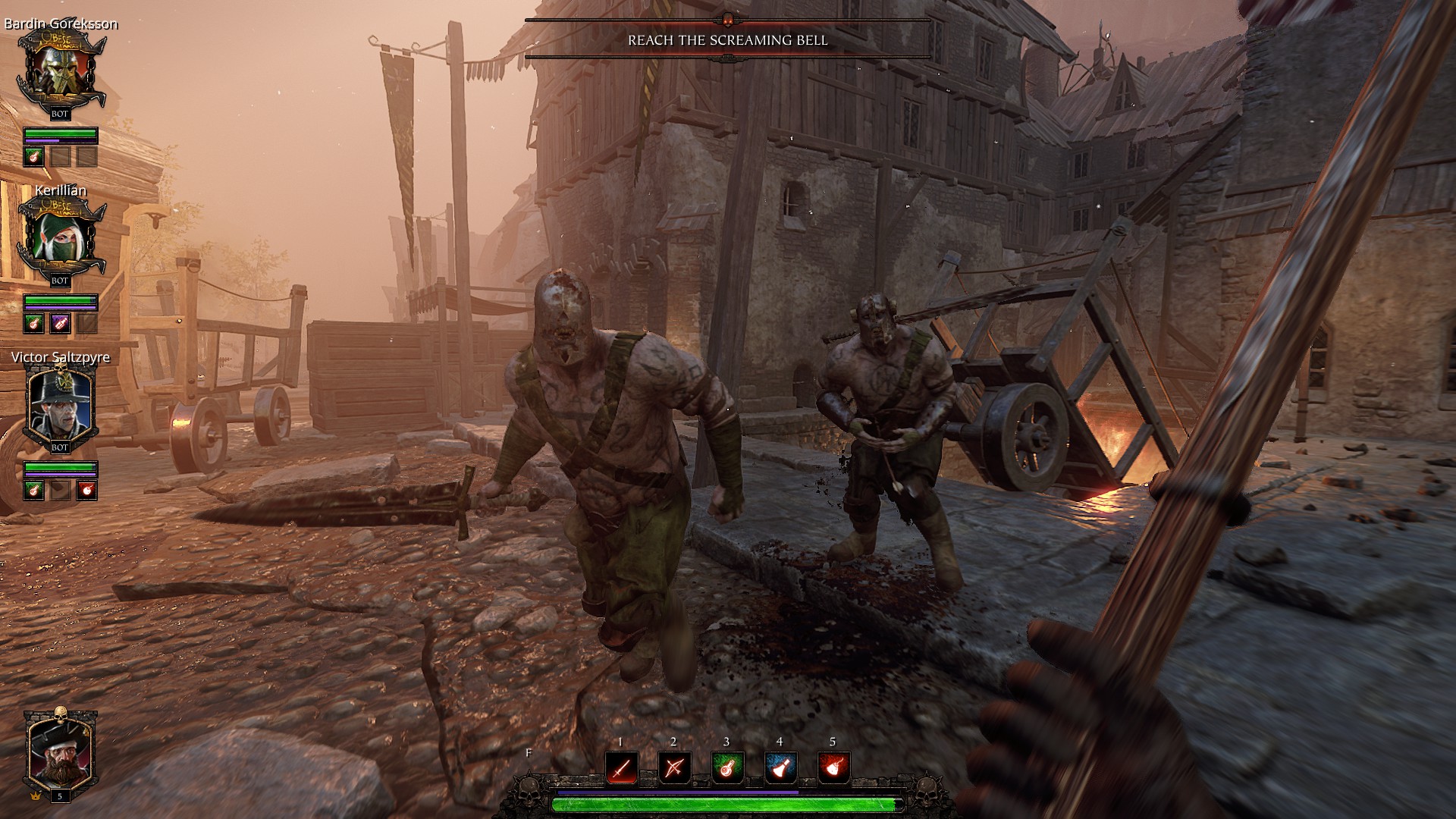
Sometimes in Vermintide 2 an enemy, whether a furry ratman or one of the worm-pale Northmen, gets killed the moment before your swing connects. The elf at the back puts an arrow in an eye socket, or the witch hunter jabs his rapier through while running past. Even though your own attack is wasted, watching it connect and sever an already dead enemy's limb is never a downer, because that's how good it feels to hit things in Vermintide 2.
As you juke around its hordes, staggering backward as you deflect a blow then blurring forwards for a riposte, you feel like you're in a deadly duel where on one side there's you and your mates, and on the other side there's a hundred mutants. It scales up everything about the first Vermintide, with more open levels, a more involved leveling system, and more enemies, but what really makes a difference is how it makes the first game's combat feel weightless by comparison.
To find any other game with first-person melee combat this good you either have to sink into the fiddly competitive world of Mordhau and Chivalry 2, or travel back in time to Dark Messiah. But you don't have to do either because Vermintide 2's right here, right now, and you can play it with your friends.
2. Total War: Warhammer 2 (2017)
Creative Assembly/Sega
Steam | Epic
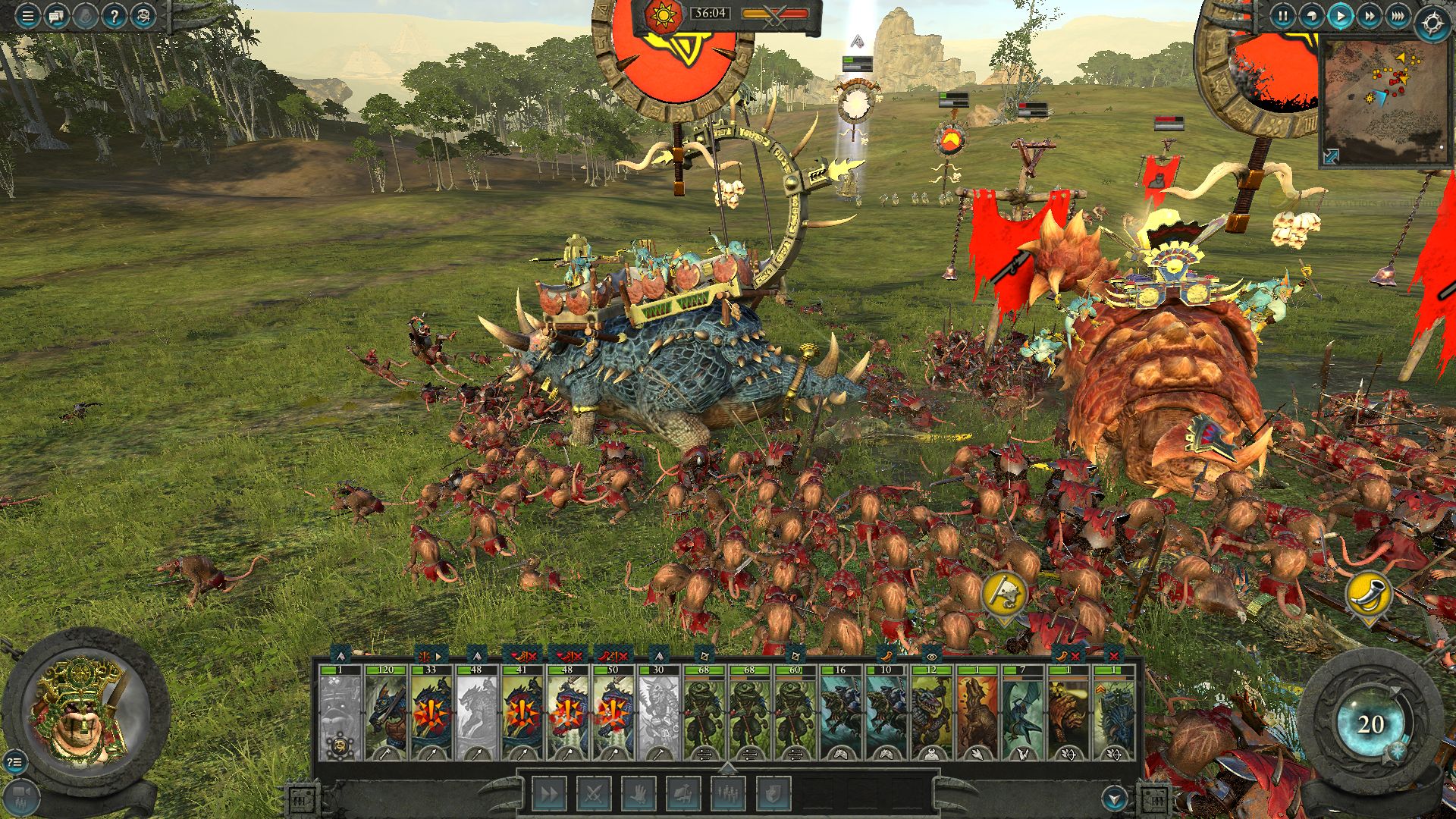
"More of the same" can be a flaw, but not when we're talking about Warhammer. This isn't a setting that thrives on originality. It's about maximalism, everything you like about trad fantasy baked together and then even more layered on top. That's what Total War: Warhammer 2 delivers, with more armies, more unique mechanics for those armies, more landmass, and more campaigns.
The basic campaign, a race to control a magic vortex, is under-rated and thoroughly decent. The bespoke campaigns in each faction DLC are better though, like the food-obsessed goblins with their own cooking minigame, the fleets of vampirates hunting for fragments of a magic shanty to control a sea beast, and the skaven clan who use "growth juice" to make mix-and-match mutants in a quest for perfection.
I used to think the best Total War games were the ones with smaller maps, like the Shogun games, but Warhammer 2 has four continents plus change, with the Mortal Empires campaign making it even bigger, and all its sprawling decadence results in a big opulent layer cake of everything that's great about Warhammer. We've never had going back for seconds this good.
1. Total War: Warhammer 3 (2022)
Creative Assembly/Sega
Steam | Epic
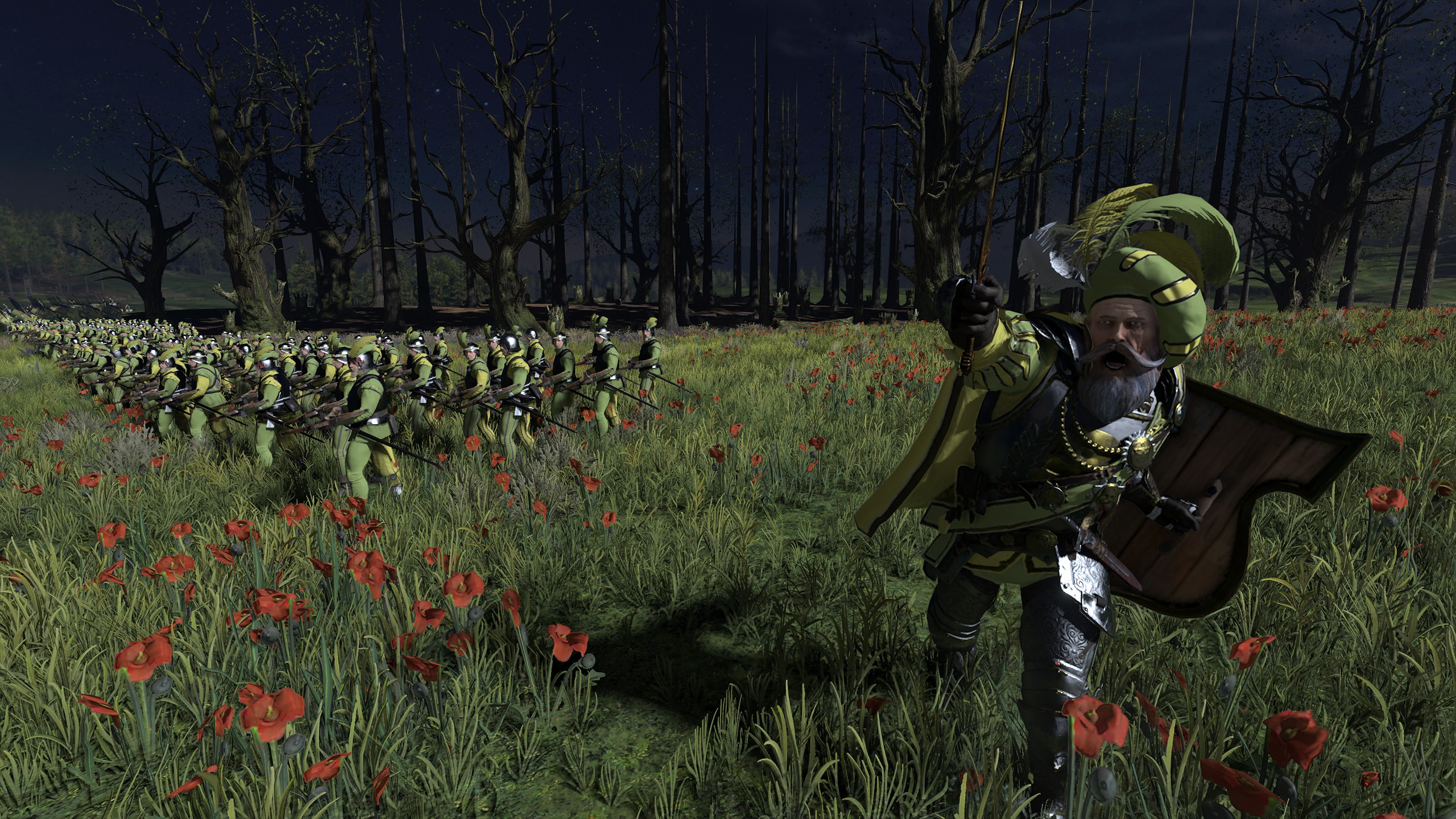
While it may not have arrived in the best state, and the base Realm of Chaos campaign does get old fast, after a bunch of updates Total War: Warhammer 3 has managed to squeak ahead of Warhammer 2 by an ice bear's nose.
Faction mechanics—like Cathay's trade caravan management, Kislev's struggle for unification, and Slaanesh seducing units right out from under you moments before battle—make each of them feel as individual as any force in the previous games, but playing both this and its predecessor back to back, it's the small improvements that make the biggest differences.
In battle, idle units are highlighted so you don't lose track of who isn't pulling their weight when a second 20-strong doomstack shows up to reinforce your first. While you're targeting a spell, time slows down automatically to make it easier to line up some Blue Fire of Tzeentch. As characters move into a new region, the effects they'll have on it are summarized above their heads. Magic items are easier to manage, and low-level gear you've grown out of can be combined to rank it up.
Most significantly, a diplomacy system borrowed from Total War: Three Kingdoms lets you trade settlements, make quick deals, and more directly work with allies—completing requests to earn respect that can be spent to give commands or borrow armies, and building outposts in allied settlements that let you recruit their troops into your armies. The series' main flaw has become a system that's worth engaging with, but can also be rushed through and put aside if that's your preference.
Though its launch wasn't smooth, Warhammer 3 is now the smoothest way to play Total War: Warhammer.
Warhammer: What to read next
That's a lot of Warhammer. But if you want to know more about the Old World and the stories behind its many games, here's what to read next.
- Major events in the Warhammer timeline
- The untimely death of Warhammer Online, and the long road to resurrect it
- Warhammer books to read after you play Vermintide
- Great moments in PC gaming: Finishing a Mortal Empires campaign in Total War: Warhammer
- Ranking the best and worst Total War: Warhammer 2 DLC

Jody's first computer was a Commodore 64, so he remembers having to use a code wheel to play Pool of Radiance. A former music journalist who interviewed everyone from Giorgio Moroder to Trent Reznor, Jody also co-hosted Australia's first radio show about videogames, Zed Games. He's written for Rock Paper Shotgun, The Big Issue, GamesRadar, Zam, Glixel, Five Out of Ten Magazine, and Playboy.com, whose cheques with the bunny logo made for fun conversations at the bank. Jody's first article for PC Gamer was about the audio of Alien Isolation, published in 2015, and since then he's written about why Silent Hill belongs on PC, why Recettear: An Item Shop's Tale is the best fantasy shopkeeper tycoon game, and how weird Lost Ark can get. Jody edited PC Gamer Indie from 2017 to 2018, and he eventually lived up to his promise to play every Warhammer videogame.

